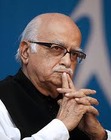L.K. Advani's Blog, page 5
November 4, 2013
WHEN V.P. MENON CORNERED A BRITISH GENERAL
Last month, I wrote a blog titled: Dr. Munshi’s Historic Letter to Pandit Nehru.
In the Tailpiece to this blog I had recalled what I had read in a recent Pioneer report that Panditji wanted to refer the Hyderabad issue also to the U.N. Security Council and he had strongly disapproved of Sardar Patel’s decision to send the army into Hyderabad.
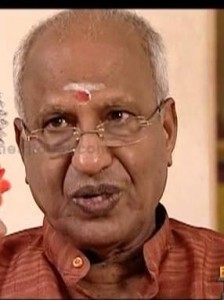 The Pioneer report was based on a book written by an IAS officer, one MKK Nair. In my blog relating to Dr. Munshi’s letter, I had said that I have been desperately searching for the book on which the news report was based, but I have not been able to locate it at any bookstore or even in any library. Shri Chandan Mitra, Pioneer Editor also had been unable to get it for me. Through this blog, I appealed to all my readers that I would feel “greatly indebted” to whosoever can procure the book for me. I also asked a senior leader of the Kerala BJP, and a former Parliamentary colleague of mine, Shri O. Rajagopal, to try to locate the book.
The Pioneer report was based on a book written by an IAS officer, one MKK Nair. In my blog relating to Dr. Munshi’s letter, I had said that I have been desperately searching for the book on which the news report was based, but I have not been able to locate it at any bookstore or even in any library. Shri Chandan Mitra, Pioneer Editor also had been unable to get it for me. Through this blog, I appealed to all my readers that I would feel “greatly indebted” to whosoever can procure the book for me. I also asked a senior leader of the Kerala BJP, and a former Parliamentary colleague of mine, Shri O. Rajagopal, to try to locate the book.
I am very happy that these efforts have borne fruit, thanks particularly to Rajagopalji. It appears that the book had been written in Malayalam. The news item in the Pioneer was based on that. The book was in the process of being translated into English. The translator, Shri Gopakumar, has now addressed a letter to me, and along with the letter sent me a copy of the translated manuscript which he writes would be published by the publishers soon after appropriate editing.
Going through the relevant portions of the book, I find that the cabinet meeting which occasioned a sharp exchange between Nehru and Patel on the Hyderabad issue took place shortly before the so called ‘police action’ actually took place in 1948. This was also a phase when Lord Mountbatten had left for London, and Rajaji had become Governor General.
What follows in MKK Nair’s book is an episode which casts a serious reflection on some British army officials hostile to India. Instead of paraphrasing this episode, or giving just its summary, let me put on record what Nair has exactly said in his book titled “The Story of an Era Told without Ill Will”.
Nair writes:
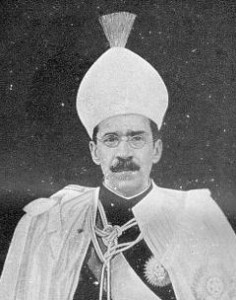
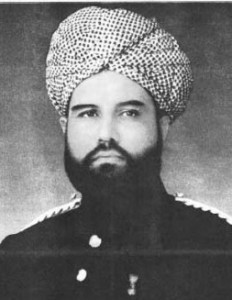 “On April 30, 1948, Indian Army withdrew fully from Hyderabad. After that, Rizvi and the Razakars began to behave licentiously all over the state. Mountbatten had left and Rajaji was the Governor General. Nehru, Rajaji and Patel were all aware of the dangerous situation prevailing in Hyderabad. Patel believed that the army should be sent to put an end to the Nizam’s wantonness. At about that time, the Nizam had sent an emissary to Pakistan and transferred a large sum of money from his Government account in London to Pakistan. At a cabinet meeting, Patel had described these things and demanded that army be sent to end the terror-regime in Hyderabad. Nehru who usually spoke calmly, peacefully and with international etiquette, spoke losing his composure, ‘You are a total communalist. I will never accept your recommendation.’
“On April 30, 1948, Indian Army withdrew fully from Hyderabad. After that, Rizvi and the Razakars began to behave licentiously all over the state. Mountbatten had left and Rajaji was the Governor General. Nehru, Rajaji and Patel were all aware of the dangerous situation prevailing in Hyderabad. Patel believed that the army should be sent to put an end to the Nizam’s wantonness. At about that time, the Nizam had sent an emissary to Pakistan and transferred a large sum of money from his Government account in London to Pakistan. At a cabinet meeting, Patel had described these things and demanded that army be sent to end the terror-regime in Hyderabad. Nehru who usually spoke calmly, peacefully and with international etiquette, spoke losing his composure, ‘You are a total communalist. I will never accept your recommendation.’
Patel remained unperturbed but left the room with his papers.
*
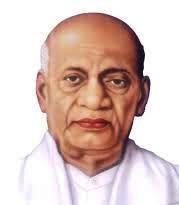
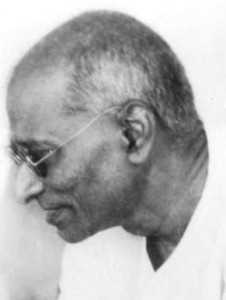 The situation in Hyderabad worsened day by day. Rajaji wanted to find a solution to the basic issue and also conciliate between Nehru and Patel. He called V P Menon and talked to him. VP let Rajaji know that the army was being kept battle-ready and could be asked to attack at any time. Rajaji invited Nehru and Patel to come to Rashtrapati Bhavan (then the Governor General’s house) next day. V P Menon was also asked to be present. As V P Menon was on his way to Rashtrapati Bhavan for the meeting, an ICS officer named Butch (from the State Home Ministry who had conducted discussions for integration of Travancore and Kochi) stopped him and handed over a letter. It was from the British High Commissioner and protested the rape of seventy year old nuns of a convent two days earlier by Razakars. V P Menon handed over the letter to Rajaji when he reached for the meeting.
The situation in Hyderabad worsened day by day. Rajaji wanted to find a solution to the basic issue and also conciliate between Nehru and Patel. He called V P Menon and talked to him. VP let Rajaji know that the army was being kept battle-ready and could be asked to attack at any time. Rajaji invited Nehru and Patel to come to Rashtrapati Bhavan (then the Governor General’s house) next day. V P Menon was also asked to be present. As V P Menon was on his way to Rashtrapati Bhavan for the meeting, an ICS officer named Butch (from the State Home Ministry who had conducted discussions for integration of Travancore and Kochi) stopped him and handed over a letter. It was from the British High Commissioner and protested the rape of seventy year old nuns of a convent two days earlier by Razakars. V P Menon handed over the letter to Rajaji when he reached for the meeting.
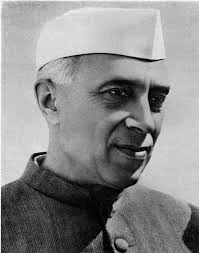 The meeting at Rashtrapati Bhavan began after Nehru and Patel arrived. Rajaji in his typical style described the situation in Hyderabad. He felt that, to safeguard India’s reputation, a decision should not be delayed any longer. Nehru was concerned about international repercussions. Rajaji then played his trump card – the letter from the British High Commissioner. Nehru read it. His face turned red and veins bulged on his bald head. Anger choked his words. He shot out of his chair, slammed his fist on the table and cried out, ‘Let’s not waste a moment. We’ll teach them a lesson.’
The meeting at Rashtrapati Bhavan began after Nehru and Patel arrived. Rajaji in his typical style described the situation in Hyderabad. He felt that, to safeguard India’s reputation, a decision should not be delayed any longer. Nehru was concerned about international repercussions. Rajaji then played his trump card – the letter from the British High Commissioner. Nehru read it. His face turned red and veins bulged on his bald head. Anger choked his words. He shot out of his chair, slammed his fist on the table and cried out, ‘Let’s not waste a moment. We’ll teach them a lesson.’
Rajaji immediately told V P Menon, ‘VP, inform the Commander in-Chief to proceed according to the plan’
VP conveyed the order to General Busher. Nehru sat with his head in his hands. He drank tea and remained silent. Rajaji smiled and said: ‘If it is cancer, it has to be removed, even if it is painful.’
V P Menon returned to his office after the meeting and quickly planned the things to be done. The Commander-in-Chief of Pakistan was also an Englishman who nursed feelings of enmity with Indian leaders. When Busher took over from General Lockhart as Commander in-Chief, he had sworn allegiance to India in God’s name. Soon after Busher heard from V P Menon, he instructed Rajendra Singh who asked General Choudhary to begin military action at three next morning. At seven that evening, Busher contacted Karachi and spoke with his counterpart there. The conversation was in French.
Next morning at ten, V P Menon walked into Busher’s room. Assuming that he had come for details of the Hyderabad action, Busher brought him up to date with its progress. VP then said, ‘I know all that. I have come for something else. Did you speak with Pakistan’s Commander in-Chief yesterday evening.’ Hearing this, Busher’s face went pale.
‘VP, are you saying that we friends cannot speak with each other?
‘Was that a friendly conversation?’
‘Do you doubt it?’
‘Why did you speak in French?’
‘Have you started tapping telephones?’
“Shouldn’t we if circumstances warrant? Was it really a friendly chat?’
‘Of course!
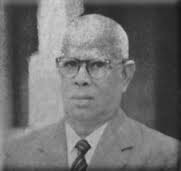 V P Menon took out a document and gave it to Busher. It was the transcript of the previous evening’s conversation and an English translation which read:
V P Menon took out a document and gave it to Busher. It was the transcript of the previous evening’s conversation and an English translation which read:
Busher: Attack on Hyderabad begins tonight. Will not last many days. If you must do anything, do so right away.
Pakistan C-in-C: Thanks. Shall inform Liaquat Ali. Jinnah is on his deathbed.
Busher: After I do my duty, I shall be in your hands.’
Busher who had pretended to be offended by telephone-tapping was sweating now. He looked sorrowfully at V P Menon and said, ‘What should I do, VP? I have made a mistake. I am sorry.’
V P Menon asked him, ‘Did you not swear allegiance to India in the name of God, with your hand on the Bible?’
Busher: ‘VP, please save me. I am willing to atone for what I have done. Don’t humiliate me. Help me for our old friendship.’
V P Menon obtained a letter from Busher that read, ‘I resign on personal and health grounds. Please accept it immediately’ and left. General Cariappa was then given charge of the Indian Army.
L.K. ADVANI
New Delhi
November 5, 2013

October 20, 2013
प्रधानमंत्री : एक शानदार टीवी धारावाहिक
दो वर्ष प्रकाशित हुई मेरे ब्लॉग के संग्रहों वाली पुस्तक ”एज़ आई सी इट” (As I see it) की प्रस्तावना एम.जे. अकबर ने लिखी थी।
इस संग्रह पर अपने अभिमत को निष्कर्ष रुप में रखते हुए अकबर ने लिखा:
”एक राजनीतिज्ञ के रुप में वह बोलने से ज्यादा अक्सर पढ़ते हैं, और एक ऐसा व्यक्ति जिसने काफी ज्यादा वर्ष वैचारिक पत्रकारिता में बिताए हैं, ऐसे लालकृष्ण आडवाणी का मस्तिष्क राजनीति में ओत-प्रोत है लेकिन उनका दिल लिखे शब्दों से जुड़ा है। ….. नेट पर आडवाणी ब्लॉग से कुछ कम और जीवन की विविधता में एक स्तम्भ से ज्यादा हैं, जिसमें एक राजनीतिज्ञ से अपेक्षा से ज्यादा राजनीति की कम भूमिका है। यह कुछ संस्मरण, कुछ यात्रा वृतांत, कुछ पुस्तक समीक्षा हैं जो उनके शौक सिनेमा में लगातार डूबी रहती हैं।”
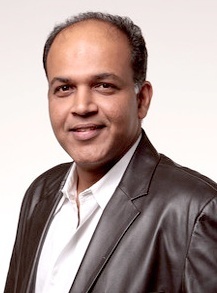 जनवरी, 2011 के अपने एक ब्लॉग में, मैंने ब्रिटिश शासन के विरुध्द चटगांव विद्रोह से जुड़ी प्रसिध्द फिल्म निर्माता आशुतोष गॉवरीकर द्वारा निर्मित हिन्दी फिल्म के बारे में लिखा था। फिल्म का नाम था खेलें हम जी जान से और यह दि टेलीग्राफ की मानिनी चटर्जी द्वारा लिखी गई अत्यन्त शोधपरक पुस्तक पर आधारित थी।
जनवरी, 2011 के अपने एक ब्लॉग में, मैंने ब्रिटिश शासन के विरुध्द चटगांव विद्रोह से जुड़ी प्रसिध्द फिल्म निर्माता आशुतोष गॉवरीकर द्वारा निर्मित हिन्दी फिल्म के बारे में लिखा था। फिल्म का नाम था खेलें हम जी जान से और यह दि टेलीग्राफ की मानिनी चटर्जी द्वारा लिखी गई अत्यन्त शोधपरक पुस्तक पर आधारित थी।
गॉवरीकर की दो पूर्व देशभक्तिपूर्ण फिल्में लगान और स्वदेश काफी लोकप्रिय रहीं। हालांकि इस ब्लॉग विशेष का जोर इस पर था कि ब्रिटिश शासन से स्वतंत्रता प्राप्ति के भारतीय संघर्ष पर तो कुछ फिल्में बनी हैं परन्तु हमारी अपनी भारत सरकार द्वारा 1975 में लोकतंत्र का गला घोंटने और कैसे लोकनायक जयप्रकाश नारायण के नेतृत्व में लोगों ने आपातकाल के विरुध्द लड़ाई लड़ी तथा लोकतंत्र को समाप्त करने के शासकों के मसूबों पर पानी फेरा-को लेकर एक भी फिल्म नहीं बनी है।
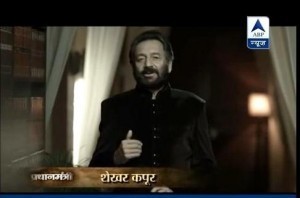 आज के मेरे ब्लॉग का उद्देश्य एबीपी न्यूज को बधाई देना है कि न केवल उन्होंने उस शून्य को भरा है जो मैंने 2011 के ब्लॉग में इंगित किया था अपितु एक अत्यन्त शोधपरक धारावाहिक प्रधानमंत्री के माध्यम से आजादी के बाद से सभी महत्वपूर्ण घटनाओं के बारे में दर्शकों को शिक्षित भी किया है।
आज के मेरे ब्लॉग का उद्देश्य एबीपी न्यूज को बधाई देना है कि न केवल उन्होंने उस शून्य को भरा है जो मैंने 2011 के ब्लॉग में इंगित किया था अपितु एक अत्यन्त शोधपरक धारावाहिक प्रधानमंत्री के माध्यम से आजादी के बाद से सभी महत्वपूर्ण घटनाओं के बारे में दर्शकों को शिक्षित भी किया है।
अभी तक मैं लगभग आधा दर्जन एपिसोड-ऑपरेशन ब्लू स्टार, श्रीमती गांधी की हत्या, भारत-पाक युध्द में लालबहादुर शास्त्री की विजय, ताशकंद शिखर वार्ता और ताशकंद में शास्त्रीजी की मृत्यु, श्रीमती गांधी का आपातकाल, और 1977 के चुनावों में मोरारजी देसाई की विजय-से सम्बन्धित देख पाया हूं। मुझे ज्ञात हुआ कि इसका शोध, स्क्रिप्ट, सम्पादन, निर्देशन इत्यादि सभी चैनल के भीतर ही किया गया है। मैं अवश्य ही कहूंगा कि इसके प्रस्तोता शेखर कपूर के साथ यह धारावाहिक दिलचस्प और शिक्षित भी कर रहा है।
 अभी तक इस धारावाहिक की 14 या 15 कड़ियां प्रसारित हो चुकी हैं। कल रात्रि (19 अक्तूबर) को दिखाई गई कड़ी में शाहबानो प्रकरण और न्यायालय द्वारा अयोध्या में रामजन्म भूमि के द्वार खोलने सम्बन्धी घटनाक्रम दिखाया गया।
अभी तक इस धारावाहिक की 14 या 15 कड़ियां प्रसारित हो चुकी हैं। कल रात्रि (19 अक्तूबर) को दिखाई गई कड़ी में शाहबानो प्रकरण और न्यायालय द्वारा अयोध्या में रामजन्म भूमि के द्वार खोलने सम्बन्धी घटनाक्रम दिखाया गया।
धारावाहिक में कार्यक्रम प्रस्ताता ने प्रस्तुत किया कि कैसे सरकार ने बारी-बारी, पहले मुस्लिम वोट बैंक और फिर हिन्दू वोट बैंक को लुभाने की योजना रची।
इस धारावाहिक के निर्माताओं ने इसे यूटयूब पर डालकर बुध्दिमानी का काम किया है। मैंने व्यक्तिगत रुप से कोलकाता में अविक बाबू और दिल्ली में एमसीसी के ग्रुप एडीटर (जिसमें एबीपी न्यूज भी शामिल है) शाजी जमां को इस शानदार कार्यक्रम के लिए बधाई दी है।
टेलपीस (पश्च्यलेख)
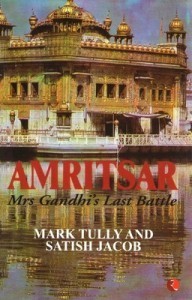 बीबीसी के मार्क टुली और सतीश जैकब ने एक पुस्तक लिखि थी: ”अमृतसर-मिसेज गांधीज लास्ट बैटल।
बीबीसी के मार्क टुली और सतीश जैकब ने एक पुस्तक लिखि थी: ”अमृतसर-मिसेज गांधीज लास्ट बैटल।
प्रधानमंत्री धारावाहिक में दिखाया गया है कि कैसे भारत सरकार ने पंजाब में शिरोमणि अकाली दल के प्रभाव को खत्म करने के उद्देश्य से जनरैल सिंह भिण्डरवाले को बढ़ाया-वाला हिस्सा इसी पुस्तक पर आधारित है। धारावाहिक के इस हिस्से को सतीश जैकब ने एंकर के रुप में प्रस्तुत किया। पुस्तक में लिखा है:
सतीश जैकब ने एक बार देखा कि प्रौढ़ महिला और उसका जवान बेटा भिण्डरवाले के सामने अपना केस रख रहे थे। महिला ने कहा कि उसके पति ने उसे छोड़ दिया है और उसकी चिंता नहीं करता। उसने भिण्डरावाले से उसे ‘खत्म‘ करने को कहा।
भिण्डरवाले ने जवाब दिया: ‘मैं केवल सिख धर्म के दुश्मनों-पुलिसवालों, सरकारी अधिकारियों और हिंदुओं को खत्म करता हूं; तब उस बेटे ने पूछा ‘क्या आप मुझे हथियार दे सकते हो ताकि मैं यह काम कर सकूं।‘
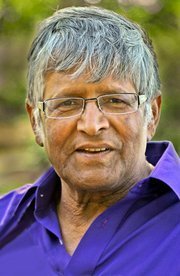 भिण्डरवाले ने पलटकर कहा ‘नहीं। जाओ और खुद अपने लिए हथियार खरीदो।‘ उस बेटे ने फिर पूछा ‘यदि मैं अपना काम करके वापस आऊं तो क्या मुझे यहां शरण मिल सकती है?’
भिण्डरवाले ने पलटकर कहा ‘नहीं। जाओ और खुद अपने लिए हथियार खरीदो।‘ उस बेटे ने फिर पूछा ‘यदि मैं अपना काम करके वापस आऊं तो क्या मुझे यहां शरण मिल सकती है?’
नहीं, हम केवल उनको शरण देते हैं जो आंदोलन के नाम पर काम करके वापस आते हैं। यदि तुम जाकर किसी ऐसे पुलिसवाले को जो मेरे लोगों को तंग करता है या किसी सरकारी अधिकारी को जो हमारे खिलाफ है, को मारकर आओगे तब मैं तुम्हें न केवल शरण दूंगा बल्कि फूलमालाओं से स्वागत भी करुंगा।‘
वास्तव में, संत ने उस नौजवान और उसकी मां पर दया की। उसने उसके पिता के गांव का नाम पूछा और कहा ‘ठीक है। मैं थानेदार को तुम्हारे बाप की टांगे तोड़ने को कह दूंगा।‘
जब सतीश जैकब ने भिण्डरवाले के दुभाषिए से पूछा कि वह यह कैसे करेगा, तो दुभाषिए ने जवाब दिया, ‘कोई भी संतजी के आदेशों को ठुकरा नहीं सकता।‘
लालकृष्ण आडवाणी
नई दिल्ली
20 अक्टूबर, 2013

October 19, 2013
PRADHAN MANTRI: AN EXCELLENT TV SERIAL
M.J. Akbar wrote the Foreword to my compilation of blogposts published two years back under the title “As I See it”.
Summing up his comments on the compilation, Akbar writes:
“As a politician who reads more often than he speaks, and someone who spent long years in ideological journalism, Lal Krishna Advani’s mind remains steeped in politics but his heart belongs to the written word…..Advani-on-the-net was less of a blog and more of a column on the variety of life, in which politics played less of a role than you might expect from a politician. It was part reminiscence, part travelogue, part book review, with a frequent dip into his hobby, cinema.”
 In one of my blogs written in January 2011, I wrote about a Hindi film produced by the famous film maker Ashutosh Gowariker, dealing with the Chittagong uprising against British rule. The film was named Khelein Hum Jee Jaan Se, and was based on a very well researched book written by Manini Chatterji of The Telegraph.
In one of my blogs written in January 2011, I wrote about a Hindi film produced by the famous film maker Ashutosh Gowariker, dealing with the Chittagong uprising against British rule. The film was named Khelein Hum Jee Jaan Se, and was based on a very well researched book written by Manini Chatterji of The Telegraph.
Gowariker’s two earlier patriotic films, Lagaan and Swades had been very popular hits. However, the thrust of this particular blog of mine was that while quite a few films have been made relating to India’s struggle for independence from British domination, there has not been a single film dealing with how our own Indian Government sought to throttle Democracy in 1975, and how under Loknayak Jai Prakash Narayan, the people waged a big battle against the Emergency, and frustrated the designs of the rulers to subvert Democracy.
 Today’s blog of mine is intended mainly to offer warm kudos to ABP News for having not only filled the void I had referred to in that 2011 blog but through its well produced serial PRADHANMANTRI, attempted to educate its viewers about all the important events since independence.
Today’s blog of mine is intended mainly to offer warm kudos to ABP News for having not only filled the void I had referred to in that 2011 blog but through its well produced serial PRADHANMANTRI, attempted to educate its viewers about all the important events since independence.
Till now I have been able to watch some half a dozen episodes relating to Operation Blue Star, Mrs. Gandhi’s assassination, Lal Bahadur Shastri’s victory in the Indo-Pak war, Tashkent Summit and Shastri’s death at Tashkent, Mrs. Gandhi’s Emergency, and Morarji Desai’s victory in 1977 elections. I gather that the research, the script, the editing, the direction etc. have all been essentially in-house contributions. I must say that with Shekhar Kapur discharging the role of the principal compere, the serial is proving as engrossing as it is enlightening.
 Till today, 14 or 15 of this 24-episode serial have been screened. Last night (19th October) the Shah Bano episode, and the episode in which Court ordered the opening of the Rama Temple gates in Ayodhya were shown.
Till today, 14 or 15 of this 24-episode serial have been screened. Last night (19th October) the Shah Bano episode, and the episode in which Court ordered the opening of the Rama Temple gates in Ayodhya were shown.
The commentators in the serial projected the two events as Government’s planned moves to placate, turn by turn, first Muslim vote banks and later Hindu vote banks.
The producers of the serial have acted wisely in putting the serial on the You Tube. I have personally spoken to Avik Babu in Kolkatta and the Group Editor of the MCCS network which include ABP News, Shazi Zaman in Delhi, and complimented them on this excellent production.
TAILPIECE
 Mark Tully and Satish Jacob of BBC have written a book titled: AMRITSAR Mrs. Gandhi’s Last Battle.
Mark Tully and Satish Jacob of BBC have written a book titled: AMRITSAR Mrs. Gandhi’s Last Battle.
The Pradhan Mantri serial’s portions showing how GOI promoted Jarnail Singh Bhindranwale and his cult in Punjab in order to undercut the influence of the Shiromani Akali Dal in the State is based very much on this book. Satish Jacob acts an anchor in this part of the serial. The book mentions:
Satish Jacob once watched a middle-aged woman and her grown-up son pleading their case before Bhindranwale. The woman said that her husband had deserted her and was refusing to support her. She asked Bhindranwale to ‘finish’ him.
Bhindranwale replied, ‘I only finish those who are enemies of the Sikh faith like policemen, government officials and Hindus. The son then asked, ‘Can you give me a weapon so that I can go and do the job?’
 Bhindranwale retorted, ‘No. Go and buy a gun yourself’.’ ‘Will I be able to come back here for sanctuary if I do the job?’
Bhindranwale retorted, ‘No. Go and buy a gun yourself’.’ ‘Will I be able to come back here for sanctuary if I do the job?’
‘No, we only give sanctuary to those who come back after doing a job in the name of the movement. If you go and eliminate a policeman who has harassed my people or a government official who is against us, then I will not only give you sanctuary, I will welcome you with garlands.’
Eventually the Sant took pity on the young man and his mother. He asked the name of the father’s village and said, ‘All right. I will tell the thanedar (officer in charge of the police station) to break your father’s legs.’
When Satish Jacob inquired of Bhindranwale’s interpreter how he could do that, the interpreter replied, ‘No one can refuse Santji’s orders.’
L.K. Advani
New Delhi
20 October, 2013

October 11, 2013
डा. मुंशी का पण्डित नेहरु को ऐतिहासिक पत्र: वी.पी. मेनन ने कहा ‘एक अद्भूत’
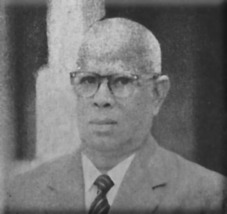 अपने एक पूर्ववर्ती ब्लॉग में मैंने विस्तार से बताया था कि कैसे सरदार पटेल, उनके निकट सहयोगी वी.पी. मेनन तथा लार्ड माउंटबेंटन ने मिलकर ब्रिटिशों के जाने के बाद भारत को एक सूत्र में गूंथने के लिए प्रयास किए। उसके लिए मैंने वी.पी. मेनन जिन्हें सरदार पटेल ने विदेश विभाग में सचिव नियुक्त किया था, द्वारा लिखी गई दो उत्कृष्ट पुस्तकों के साथ ही एक और ताजा पुस्तक एलेक्स वॉन वूनेलमान द्वारा लिखित ”इण्डियन समर: दि सिक्रेट हिस्ट्री ऑफ दि एण्ड ऑफ एन अम्पायर” का सहयोग लिया था। यह महिला लेखक प्रमुखतया ऑक्सफोर्ड में शिक्षित शोधार्थी हैं और अब लंदन में रहती हैं। मेनन की जिन दो पुस्तकों को मैं सभी पुस्तक प्रेमियों से पढ़ने की सिफारिश करता हूं उनके शीर्षक हैं ‘इण्टीग्रेशन ऑफ दि इण्डियन स्टेट्स‘ और दि ‘ट्रांसफर ऑफ पॉवर‘A
अपने एक पूर्ववर्ती ब्लॉग में मैंने विस्तार से बताया था कि कैसे सरदार पटेल, उनके निकट सहयोगी वी.पी. मेनन तथा लार्ड माउंटबेंटन ने मिलकर ब्रिटिशों के जाने के बाद भारत को एक सूत्र में गूंथने के लिए प्रयास किए। उसके लिए मैंने वी.पी. मेनन जिन्हें सरदार पटेल ने विदेश विभाग में सचिव नियुक्त किया था, द्वारा लिखी गई दो उत्कृष्ट पुस्तकों के साथ ही एक और ताजा पुस्तक एलेक्स वॉन वूनेलमान द्वारा लिखित ”इण्डियन समर: दि सिक्रेट हिस्ट्री ऑफ दि एण्ड ऑफ एन अम्पायर” का सहयोग लिया था। यह महिला लेखक प्रमुखतया ऑक्सफोर्ड में शिक्षित शोधार्थी हैं और अब लंदन में रहती हैं। मेनन की जिन दो पुस्तकों को मैं सभी पुस्तक प्रेमियों से पढ़ने की सिफारिश करता हूं उनके शीर्षक हैं ‘इण्टीग्रेशन ऑफ दि इण्डियन स्टेट्स‘ और दि ‘ट्रांसफर ऑफ पॉवर‘A
परन्तु उस ब्लॉग में टेलपीस 30 अक्टूबर 2012 यानी गत् वर्ष सरदार की जन्मतिथि से एक दिन पूर्व पॉयनियर दैनिक में प्रकाशित एक समाचार पर आधारित था। यह समाचार हैदराबाद में भारत सरकार के ऑपरेशन से कुछ सप्ताह पूर्व मंत्रिमण्डल की बैठक में नेहरु और पटेल में हुई गर्मागर्मी से सम्बंधित था। पण्डित नेहरु सैन्य कार्रवाई के विरोधी थे जबकि सरदार पटेल ने वहां से प्राप्त रिपोर्टों कि कैसे निजाम की निजी सेना-रजकारों द्वारा निर्दोष नागरिकों पर अत्याचार किए जा रहे हैं, को ध्यान में लेकर उक्त निर्णय किया था।
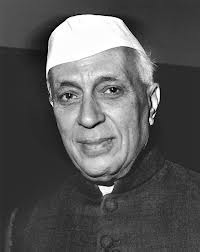 पण्डित नेहरु हैदराबाद के मुद्दे को भी कश्मीर की भांति संयुक्त राष्ट्र को सौंपना चाहते थे-वह भी सरदार पटेल की विरोधी सलाह के बावजूद।
पण्डित नेहरु हैदराबाद के मुद्दे को भी कश्मीर की भांति संयुक्त राष्ट्र को सौंपना चाहते थे-वह भी सरदार पटेल की विरोधी सलाह के बावजूद।
उपरोक्त समाचार पॉयनियर के चेन्नई सवांददाता द्वारा 1947 के आईएएस अधिकारी एमकेके नायर द्वारा लिखित पुस्तक ‘विद नो इल फीलिंग टूवर्डस एनीबॉडी‘ पर आधारित था।
समाचार के मुताविक प्रधानमंत्री और उपप्रधानमंत्री के बीच हुई गर्मागर्मी के चलते सरदार पटेल बैठक से गुस्से में निकल गए। अंतत: 13 सितम्बर, 1948 को ऑपरेशन पोलो के नाम से सैन्य कार्रवाई हुई जोकि 18 सितम्बर को पूरी हुई।
जब से मैंने यह ब्लॉग लिखा तबसे मैं इस पुस्तक को व्याकुलता से तलाश रहा हूं क्योंकि मुझे लगता है कि इससे देश को पता चल सकेगा कि वास्तव में इन दोनों के बीच क्या संवाद हुआ था। मुझे मिली जानकारी के मुताबिक इस पुस्तक के लेखक अब हमारे बीच नहीं हैं। न ही यह पुस्तक मुझे किसी बुकस्टोर या पुस्तकालय में मिल पाई। अपने इस ब्लॉग के माध्यम मैं अपने पाठकों को अनुरोध करना चाहूंगा कि यदि वे मुझे यह पुस्तक उपलब्ध करा सकें तो मैं अत्यंत आभारी रहूंगा। पॉयनियर के सम्पादक चंदन मित्रा भी इसके लिए प्रयासरत हैं परन्तु उन्हें अभी तक सफलता नहीं मिली है।
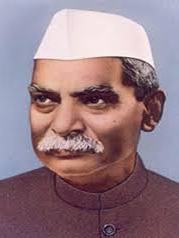 मेरा पिछला ब्लॉग 25 सितम्बर को पण्डित दीनदयाल उपाध्याय की जन्मतिथि के बारे में था और इससे जुड़ी भाजपा सम्बन्धी दो घटनाओं को मैं कभी नहीं भूल सकता। पहली 1990 में सोमनाथ से अयोध्या तक मेरी यात्रा। दूसरी, भोपाल में 6 लाख से ज्यादा सक्रिय पार्टी कार्यकर्ताओं का सम्मेलन जो आगामी 25 नवम्बर को मध्य प्रदेश में होने वाले चुनावों में 53000 से ज्यादा पोलिंग बूथों का प्रबन्धन करेंगे।
मेरा पिछला ब्लॉग 25 सितम्बर को पण्डित दीनदयाल उपाध्याय की जन्मतिथि के बारे में था और इससे जुड़ी भाजपा सम्बन्धी दो घटनाओं को मैं कभी नहीं भूल सकता। पहली 1990 में सोमनाथ से अयोध्या तक मेरी यात्रा। दूसरी, भोपाल में 6 लाख से ज्यादा सक्रिय पार्टी कार्यकर्ताओं का सम्मेलन जो आगामी 25 नवम्बर को मध्य प्रदेश में होने वाले चुनावों में 53000 से ज्यादा पोलिंग बूथों का प्रबन्धन करेंगे।
इसी ब्लॉग में मैंने उल्लेख किया था कि पुनरुध्दार के बाद सोमनाथ मंदिर का लोकार्पण सरदार पटेल करने वाले थे परन्तु 15 दिसम्बर, 1950 को उनका निधन हो गया तथा मंदिर का लोकार्पण राष्ट्रपति डा. राजेन्द्र प्रसाद द्वारा किया गया। मैंने यह भी उल्लेख किया था कि राष्ट्रपतिजी ने प्रधानमंत्री द्वारा इस कदम का विरोध करने के बावजूद ऐसा किया। और इस प्रकार एक और रोचक प्रसंग यहां पर स्मरण हो आता है। यह घटना भी पण्डित नेहरु ओर सरदार पटेल के बीच सैन्य कार्रवाई को लेकर हुए मतभेद जैसी ही है।
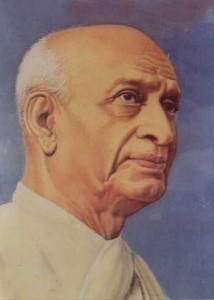 जूनागढ़ के नवाब द्वारा पाकिस्तान में विलय की घोषणा के विरुध्द उमड़े जनाक्रोश के बाद सरदार पटेल सबसे पहले वहां पहुंचे। लोगों के गुस्से को देखते हुए नवाब पाकिस्तान भाग गया था। लोगों ने सरदार पटेल का गर्मजोशी से स्वागत किया। इस विशाल सभा में सरदार पटेल ने घोषणा की कि बारह ज्योर्तिलिंगों में से प्रमुख सोमनाथ को इसके मूल स्थान पर पुन: बनाया जाएगा और ज्योर्तिलिंग पुर्नस्थापित किया जाएगा।
जूनागढ़ के नवाब द्वारा पाकिस्तान में विलय की घोषणा के विरुध्द उमड़े जनाक्रोश के बाद सरदार पटेल सबसे पहले वहां पहुंचे। लोगों के गुस्से को देखते हुए नवाब पाकिस्तान भाग गया था। लोगों ने सरदार पटेल का गर्मजोशी से स्वागत किया। इस विशाल सभा में सरदार पटेल ने घोषणा की कि बारह ज्योर्तिलिंगों में से प्रमुख सोमनाथ को इसके मूल स्थान पर पुन: बनाया जाएगा और ज्योर्तिलिंग पुर्नस्थापित किया जाएगा।
दिल्ली लौटने के बाद उन्होंने इस हेतु गांधी जी का आशीर्वाद लिया और पण्डित नेहरु के मंत्रिमंडल नें इस निर्णय को स्वीकृति दी। मंत्रिमंडलीय फैसले में निहित था कि सरकार इसका व्यय वहन करेगी। लेकिन जब सायंकाल में सरदार पटेल, के.एम. मुंशी और एन.वी. गांडगिल गांधी जी से मिले और मंत्रिमंडल की फैसले की जानकारी दी तो उन्होंने
इसका स्वागत किया परन्तु साथ ही जोड़ा: सरकार के बजाय लोगों को इसका व्यय वहन करने दो।
पण्डित नेहरु के मंत्रिमण्डल ने 1947 में सोमनाथ के पुनरुध्दार का फैसला किया। लेकिन जनवरी 1948 में गांधीजी की हत्या हो गई।
दिसम्बर, 1950 में सरदार पटेल ने अंतिम सांस ली। इन दो दिग्गजों की मृत्यु के बाद पण्डित नेहरु के रुख में बदलाव आया। 1951 के शुरु में मंत्रिमण्डल की एक बैठक के बाद पण्डितजी ने तत्कालीन खाद्य एवं कृषि मंत्री, डा. मुंशी को बुलाकर कहा: ”मैं नहीं चाहता कि आप सोमनाथ मंदिर के पुनरुध्दार की कोशिश करें। यह हिंदू नवजागरणवाद है।”
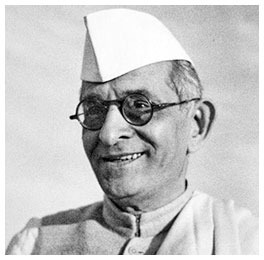 जबाव में कन्हैयालाल मुंशी ने एक शब्द नहीं बोला। वह वापस आए और एक लम्बा जबाव तैयार किया जिसका मूल पाठ उनकी प्रसिध्द पुस्तक पिलग्रमिज टू फ्रीडम में उल्लिखित है। डा. मुंशी ने पण्डित नेहरु को लिखा:
जबाव में कन्हैयालाल मुंशी ने एक शब्द नहीं बोला। वह वापस आए और एक लम्बा जबाव तैयार किया जिसका मूल पाठ उनकी प्रसिध्द पुस्तक पिलग्रमिज टू फ्रीडम में उल्लिखित है। डा. मुंशी ने पण्डित नेहरु को लिखा:
कल आपने हिंदू नवजागरणवाद का उल्लेख किया था। मंत्रिमण्डल में आपने मेरे सोमनाथ से जुड़ाव पर उंगली उठाई। मुझे खुशी है कि आपने ऐसा किया, क्योंकि मैं अपने किसी भी विचार या कार्य को अप्रकट नहीं रखना चाहता हूं। मैं आपको विश्वास दिला सकता हूं कि भारत का समस्त जनमानस आज भारत सरकार द्वारा प्रायोजित सोमनाथ के पुनरुध्दार की योजना से बहुत प्रसन्न है। इतनी प्रसन्नता उसे अब तक हमारे द्वारा किए गए या किए जा रहे किसी भी कार्य से नहीं मिली है।‘
सोमनाथ के पुनरुध्दार से जुड़े सामाजिक सुधार के पहलू पर जोर देते हुए मुंशी ने आगे लिखा-
”मंदिर के द्वार हरिजनों के लिए खोलने के निर्णय की हिंदू समुदाय के कट्टरपंथी वर्ग की ओर से कुछ आलोचना जरुर हो रही है, लेकिन ट्रस्ट के करारनामे में स्पष्ट कर दिया गया है कि मंदिर के द्वार न केवल हिंदू समुदाय के सभी वर्गों के लिए खुले हैं, बल्कि सोमनाथ मंदिर की प्राचीन परंपरा के अनुसार, वह गैर-हिंदू दर्शकों के लिए भी खुला है। कई रीति-रिवाजों को मैं अपने व्यक्तिगत जीवन में बचपन से ही तोड़ता रहा हूं। हिंदूधर्म के कुछ पहलुओं को जोड़ने के लिए मैंने अपने साहित्यिक और सामाजिक कार्य के माध्यम से अपनी ओर से विनम्र प्रयास किया है-इस विश्वास के साथ कि ऐसा करके ही आधुनिक परिस्थितियों में भारत को एक उन्नत और शक्तिशाली राष्ट्र बनाया जा सकता है।”
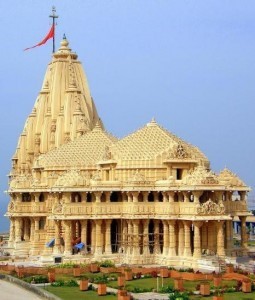 मुंशी ने एसे मार्मिक शब्दों के साथ पत्र का समापन किया जिन्हें हमें सदा के लिए सॅभालकर रखना चाहिए-
मुंशी ने एसे मार्मिक शब्दों के साथ पत्र का समापन किया जिन्हें हमें सदा के लिए सॅभालकर रखना चाहिए-
‘भविष्य को ध्यान में रखकर वर्तमान में कार्य करने की शक्ति मुझे अतीत के प्रति अपने विश्वास से ही मिली है। भारत की स्वतंत्रता अगर हमें ‘भगवद्गीता‘ से दूर करती है या हमारे करोड़ों लोगों के इस विश्वास या श्रध्दा को तोड़ती है, जो हमारे मंदिरों के प्रति उनके मन में है ओर हमारे समाज के ताने-बाने को तोड़ती है तो ऐसी स्वतंत्रता का मेरे लिए कोई मूल्य नहीं है। सोमनाथ मंदिर के पुनरुध्दार का जो सपना मैं हर रोज देखता आया हूं, उसे पूरा करने का मुझे गौरव प्राप्त हुआ है। इससे मेरे मन में यह एहसास और विश्वास उत्पन्न होता है कि इस पवित्र स्थल के पुनरुध्दार से हमारे देशवासियों की धार्मिक अवधारणा अपेक्षाकृत और शुध्द होगी तथा इससे अपनी शक्ति के प्रति उनकी सजगता और भी बढ़ेगी, जो स्वतंत्रता के इन कठिनाई भरे दिनों में बहुत आवश्यक है।”
यह पत्र पढ़कर जाने-माने प्रशासनिक अधिकारी , वी.पी. मेनन-जिन्होंने देशी रियासतों के एकीकरण में सरदार पटेल की भरपूर मदद की थी-ने मुंशी को पत्र में लिखा-‘मैंने आपके इस अद्भूत पत्र को देखा है। जो बातें आपने पत्र में लिखी हैं, उनके लिए मैं तो जीने, और आवश्यकता पड़ने पर मरने के लिए भी तैयार हूं।‘
टेलपीस (पश्च्यलेख)
जब सोमनाथ मंदिर तैयार हो गया तो डा. के.एम. मुंशी ने प्रथम राष्ट्रपति डा. राजेन्द्र प्रसाद से सम्पर्क कर अनुरोध किया कि वे मंदिर का लोकार्पण करें तथा ज्योर्तिलिंगम स्थापित करने का विधि-विधान भी करें। उन्हें आशंका थी कि राजेन्द्र बाबू इसके लिए शायद तैयार न हों। आखिरकार, राष्ट्रपति को प्रधानमंत्री से मुंशी के पत्र व्यवहार की जानकारी थी।
उनके लिए प्रसन्नता की बात यह हुई कि डा. राजेन्द्र प्रसाद तैयार हो गए। उन्होंने कहा ”यदि मुझे किसी मस्जिद या चर्च के लिए भी निमंत्रण मिलता तो मैं यही करता। क्योंकि यह भारतीय सेक्युलरिज्म का मूल है। हमारा देश न तो अधार्मिक है और नहीं धर्म-विरोधी।”
पण्डित नेहरु ने राष्ट्रपति के निर्णय का विरोध किया। लेकिन राजेन्द्र बाबू ने पण्डितजी के विरोध को दरकिनार रख अपना वायदा पूरा किया।
लालकृष्ण आडवाणी
नई दिल्ली
11 अक्टूबर, 2013

October 10, 2013
DR. MUNSHI’S HISTORIC LETTER TO PANDIT NEHRU: V.P. MENON CALLS IT ‘A MASTERPIECE’
 In one of my earlier blogs I had dealt at length with how Sardar Patel, his close colleague V.P. Menon and Lord Mountbatten had acted in perfect concert to integrate India after the Britishers left. In that I had relied not only on the two remarkable books written by V.P. Menon, whom Sardar Patel had named Secretary of the States Department, but yet another more recent book authored by a lady named Alex Von Tunzelmann titled Indian Summer: The Secret History of the End of an Empire. This lady is primarily a researcher educated in Oxford who now lives in London. Menon’s two books which I have been recommending to all book lovers are Integration of the Indian States and The Transfer of Power.
In one of my earlier blogs I had dealt at length with how Sardar Patel, his close colleague V.P. Menon and Lord Mountbatten had acted in perfect concert to integrate India after the Britishers left. In that I had relied not only on the two remarkable books written by V.P. Menon, whom Sardar Patel had named Secretary of the States Department, but yet another more recent book authored by a lady named Alex Von Tunzelmann titled Indian Summer: The Secret History of the End of an Empire. This lady is primarily a researcher educated in Oxford who now lives in London. Menon’s two books which I have been recommending to all book lovers are Integration of the Indian States and The Transfer of Power.
But the Tailpiece in that blog was taken from a news report in the Pioneer of 30th October, 2012, that is, on the eve of Sardar’s birth anniversary last year. The news report was about a sharp exchange that took place in a Cabinet meeting between Nehru and Patel just a few weeks before GOI’s operation in Hyderabad. Pandit Nehru was opposed to the army action which Sardar Patel had decided upon after receiving reports how the Nizam’s private army, the Razakars, were committing atrocities on innocent citizens.
 Pandit Nehru wanted to refer the Hyderabad issue also to the U.N. as he had done in the case of Kashmir ― that too against the advice of Patel.
Pandit Nehru wanted to refer the Hyderabad issue also to the U.N. as he had done in the case of Kashmir ― that too against the advice of Patel.
The news report filed by Pioneer’s Chennai correspondent was based on a book written by a 1947 IAS official by name MKK Nair and carries the title With No Ill Feeling Towards Anybody.
The report also said that following the bitter exchange between the Prime Minister and Deputy Prime Minister, Sardar Patel had walked out of the meeting angrily. That on September 13, 1948, the army action, named Operation Polo did take place and culminated successfully on September 18, is now history.
But since the time I wrote that blog I have been desperately searching for the book which, I thought, may possibly fill up the gaps in the country’s knowledge as to what actually transpired during the interlude. The author, I gather, is no longer alive. Nor have I been able to locate the book at any bookstore, or even in any Library. Through this blog I would like to appeal to all my readers that I would feel greatly indebted to whosoever can procure the book for me. Pioneer Editor Chandan Mitra also has been trying, but has not succeeded as yet.
 My last blog was about Pandit Deendayal Upadhyaya’s birth anniversary on September 25 and the two major BJP events that are connected with this anniversary, events which I cannot forget. The first was my Somnath to Ayodhya Yatra in 1990. The second was the record gathering of over six lakh BJP activists in Bhopal, who will be managing the over 53000 polling booths in the State when Madhya Pradesh goes to the polls on November 25 this year.
My last blog was about Pandit Deendayal Upadhyaya’s birth anniversary on September 25 and the two major BJP events that are connected with this anniversary, events which I cannot forget. The first was my Somnath to Ayodhya Yatra in 1990. The second was the record gathering of over six lakh BJP activists in Bhopal, who will be managing the over 53000 polling booths in the State when Madhya Pradesh goes to the polls on November 25 this year.
I have mentioned in this blog (October 8,) that as Sardar Patel who was to inaugurate the Somnath Temple after it had been reconstructed, passed away on December 15, 1950, the Temple’s formal opening was done by Rashtrapati Dr. Rajendra Prasad I have mentioned that he did so even though the Prime Minister had opposed the move. And thereby hangs one more interesting episode worth recounting at this point. The episode commences with a clash in the cabinet not very different from the Army-action joust between Pandit Nehru and Sardar Patel.
* * *
 It was Sardar Patel who had been the first to visit Junagarh after the popular revolt against the Nawab who had announced the state’s accession to Pakistan. Terrified by the people’s anger, the Nawab fled to Pakistan. Sardar Patel was given a rousing reception by the people. At a huge meeting Sardar Patel declared that the Somnath Temple, foremost among the twelve Jyotirlingas, would be reconstructed at its original site, and the Jyotirlinga reinstalled.
It was Sardar Patel who had been the first to visit Junagarh after the popular revolt against the Nawab who had announced the state’s accession to Pakistan. Terrified by the people’s anger, the Nawab fled to Pakistan. Sardar Patel was given a rousing reception by the people. At a huge meeting Sardar Patel declared that the Somnath Temple, foremost among the twelve Jyotirlingas, would be reconstructed at its original site, and the Jyotirlinga reinstalled.
After returning to Delhi he secured Gandhiji’s blessings for the move and had Pandit Nehru have it endorsed by his Cabinet. The Cabinet’s decision implied that Government would incur the expenditure. But that evening itself when Sardar Patel, Dr. Munshi and N.V. Gadgil went to Gandhiji to apprise him of the Cabinet’s decision, Gandhiji welcomed it but added: Let the people and not the Government bear the expenditure.
Pandit Nehru’s cabinet had decided to reconstruct Somnath in 1947. But in January 1948, Gandhiji was assassinated.
In December 1950, Sardar Patel breathed his last. After the demise of these two veterans, a change came about in Pandit Nehru’s attitude. After a Cabinet meeting in early 1951, Panditji called Dr. Munshi, who was Food and Agriculture Minister in the Cabinet and said to him: “I do not like your trying to restore Somnath. It is Hindu revivalism.”
 Kanhaiyalal Munshi did not utter a word in reply. He came back home and prepared a long letter whose text has been reproduced in his famous book Pilgrimage to Freedom. Dr. Munshi wrote to Pandit Nehru:
Kanhaiyalal Munshi did not utter a word in reply. He came back home and prepared a long letter whose text has been reproduced in his famous book Pilgrimage to Freedom. Dr. Munshi wrote to Pandit Nehru:
“Yesterday you referred to Hindu revivalism. You pointedly referred to me in the Cabinet as connected with Somnath. I am glad you did so; for I do not want to keep back any part of my views or activities….I can assure you that the ‘Collective Subconscious’ of India today is happier with the scheme of reconstruction of Somnath sponsored by the Government of India than with many other things that we have done and are doing.”
Emphasising the social reform aspect of Somnath’s reconstruction, Munshi added:
“The intention to throw open the temple to harijans has evoked some criticism from the orthodox section of the Hindu community. However, the objects of the Trust Deed make it clear that the temple is not only to be open to all classes of the Hindu community, but, according to the tradition of the old temple of Somnath, also to non-Hindu visitors. Many have been the customs which I have defied in personal life from boyhood. I have laboured in my humble way through literary and social work to share or reintegrate some aspects of Hinduism, in the conviction that that alone will make India an advanced and vigorous nation under modern conditions.”
 Dr. Munshi concluded his letter with words that deserve to be preserved in perpetuity:
Dr. Munshi concluded his letter with words that deserve to be preserved in perpetuity:
“It is my faith in our past which has given me the strength to work in the present and to look forward to our future. I cannot value India’s freedom if it deprives us of the Bhagavad Gita or uproots our millions from the faith with which they look upon our temples and thereby destroys the texture of our lives. I have been given the privilege of seeing my incessant dream of Somnath reconstruction come true. That makes me feel – makes me almost sure – that this shrine once restored to a place of importance in our life will give to our people a purer conception of religion and a more vivid consciousness of our strength, so vital in these days of freedom and its trials.”
On reading this letter, V.P. Menon, the legendary civil servant who assisted Sardar Patel in the gigantic task of the integration of the princely states, wrote a missive to Munshi. “I have seen your masterpiece. I for one would be prepared to live and, if necessary, die by the views you have expressed in your letter.”
TAILPIECE
When the Somnath Temple was ready, Dr. K.M. Munshi approached the first President, Dr. Rajendra Prasad, with the request that he inaugurate the temple and ceremonially install the Jyotirlingam. He was apprehensive that Rajendrababu might not agree. After all, the President was aware of Munshi’s correspondence with the Prime Minister.
To his delight Dr. Rajendra Prasad readily agreed. “I would do the same with a mosque or a church if I were invited,” he added. “This is the core of Indian secularism. Our state is neither irreligious nor anti-religious.”
Pandit Nehru protested the President’s decision. But Rajendrababu disregarded Panditji’s objection, and kept his promise.
L.K. Advani
New Delhi
October 11, 2013

October 9, 2013
भाजपा में कोई पूर्ण विराम नहीं
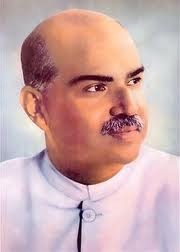 भारतीय जनता पार्टी के सभी कार्यकर्ताओं के लिए 25 सितम्बर एक महत्वपूर्ण तिथि है। यह, सन् 1951 में भारतीय जनसंघ की स्थापना के समय से ही हमारी पार्टी के प्रमुख विचारक रहे पण्डित दीनदयाल उपाध्याय की जन्मतिथि है। पार्टी की स्थापना डा. श्यामा प्रसाद मुकर्जी ने की थी। जनसंघ ने पहला आम चुनाव सन् 1952 में डा. मुकर्जी के नेतृत्व में लड़ा था, उन्होंने इस बीच दीनदयालजी को पार्टी का पहला महासचिव नियुक्त किया। महासचिव के रुप में उपाध्यायजी ने संगठनकर्ताओं की ऐसी मजबूत टीम खड़ी की जिसने डा. मुकर्जी के मार्गदर्शन में सभी राज्यों में पार्टी की मजबूत नींव रखी।
भारतीय जनता पार्टी के सभी कार्यकर्ताओं के लिए 25 सितम्बर एक महत्वपूर्ण तिथि है। यह, सन् 1951 में भारतीय जनसंघ की स्थापना के समय से ही हमारी पार्टी के प्रमुख विचारक रहे पण्डित दीनदयाल उपाध्याय की जन्मतिथि है। पार्टी की स्थापना डा. श्यामा प्रसाद मुकर्जी ने की थी। जनसंघ ने पहला आम चुनाव सन् 1952 में डा. मुकर्जी के नेतृत्व में लड़ा था, उन्होंने इस बीच दीनदयालजी को पार्टी का पहला महासचिव नियुक्त किया। महासचिव के रुप में उपाध्यायजी ने संगठनकर्ताओं की ऐसी मजबूत टीम खड़ी की जिसने डा. मुकर्जी के मार्गदर्शन में सभी राज्यों में पार्टी की मजबूत नींव रखी।
बाद में 1952 में डा. मुकर्जी ने पार्टी का अखिल भारतीय सम्मेलन कानपुर में आहूत किया। इस कानपुर सम्मेलन की तैयारियों में दीनदयालजी के साथ काम करते श्यामा प्रसाद जी ने पाया कि दीनदयालजी एक चिंतक के साथ-साथ एक कुशल संगठन की प्रतिभा और कुशाग्रता से भरे हैं। उन्हीं दिनों उन्होंने एक टिप्पणी की थी: ”यदि मेरे पास दो या तीन दीनदयाल और होते तो मैं निश्चित रुप से इस देश का नक्शा बदल देता!”
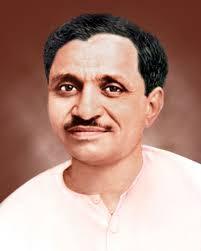 इस ब्लॉग के शीर्षक की प्रेरणा मुझे एक विदेशी पत्रकार द्वारा इस शीर्षक से लिखी गई सर्वोत्तम पुस्तक को पढ़ने के बाद मिली। इस पत्रकार को मैं व्यक्तिगत रुप से अनेक वर्षों से जानता हूं और सदैव उनका प्रशंसक रहा हूं। मैं मार्क टुली की बात कर रहा हूं जो भारत और दक्षिण एशिया में 25 वर्ष तक बीबीसी के संवाददाता रहे। आपातकाल में भारत में जिन 29 विदेशी पत्रकारों के प्रवेश पर पाबंदी थी उनमें से वे भी एक थे। बीबीसी से सेवानिवृत्त होने के बाद वह भारत में बस गए हैं और नई दिल्ली में रहते हैं।
इस ब्लॉग के शीर्षक की प्रेरणा मुझे एक विदेशी पत्रकार द्वारा इस शीर्षक से लिखी गई सर्वोत्तम पुस्तक को पढ़ने के बाद मिली। इस पत्रकार को मैं व्यक्तिगत रुप से अनेक वर्षों से जानता हूं और सदैव उनका प्रशंसक रहा हूं। मैं मार्क टुली की बात कर रहा हूं जो भारत और दक्षिण एशिया में 25 वर्ष तक बीबीसी के संवाददाता रहे। आपातकाल में भारत में जिन 29 विदेशी पत्रकारों के प्रवेश पर पाबंदी थी उनमें से वे भी एक थे। बीबीसी से सेवानिवृत्त होने के बाद वह भारत में बस गए हैं और नई दिल्ली में रहते हैं।
जिस पुस्तक का मैंने उल्लेख किया उसका शीर्षक है ”नो फुल स्टॉप इन इण्डिया।” पुस्तक उन घटनाओं का संकलन है जो भारत में एक सवांददाता के रुप में काम करते समय मार्क टुली ने नजदीक से देखी-इन घटनाओं ने वास्तव में इस तथ्य के प्रति सचेत किया कि भारत का भद्रलोक भारतीयता से काफी परे है।
जब जनवरी, 2009 में मैंने ब्लॉग लिखना शुरु किया तब मेरा दूसरे ब्लॉग का शीर्षक था: ”अंडरस्टैंडिंग जेनुएन सेक्युलरिज्म” (सही सेक्युलरिज्म को समझना)। ब्लॉग में मार्क टुली द्वारा अमित मेहरा की कॉफी टेबुल पुस्तक में लिखी गई प्रस्तावना में से काफी कुछ लिया गया है। पुस्तक का शीर्षक था: ”इण्डिया: ए टाइमलैस सेलिब्रेशन।” मैं इस सभी को दोहराना नहीं चाहता। यह ब्लॉग वाली मेरी पुस्तक “AS I SEE IT” में है।
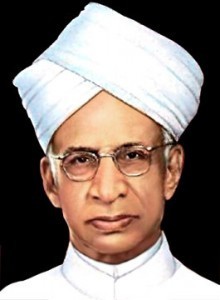 पुस्तक में मुझे जो ज्यादा पसंद आया, जिसे आज मैंने उदृत किया है और जिससे आज के ब्लॉग का शीर्षक भी प्रेरित है, वह है उनका अपना परिचय। इसमें टुली ने भारत के दूसरे राष्ट्रपति सर्वपल्ली राधाकृष्णन द्वारा एक पुस्तक में उपनिषद् के बारे में लिखे को उद्दत किया है: ‘भारतीय दिमाग की विशिष्टता आम आदमी के विश्वास को हिलाने की नहीं अपितु उनके विश्वास के पीछे के गहनतम दार्शनिक अर्थ को समझकर क्रमश: उनका नेतृत्व करने की है।‘ मार्क टुली आगे जोड़ते हैं: ”पश्चिमी जगत और उसकी नकल करने वाला भारतीय अभिजात वर्ग भारतीय प्रतिभा की महत्ता को नकारता है। वे पूर्णविराम लगाना चाहते हैं लेकिन भारतभूमि पर पूर्ण विराम की कोई जगह नहीं है।”
पुस्तक में मुझे जो ज्यादा पसंद आया, जिसे आज मैंने उदृत किया है और जिससे आज के ब्लॉग का शीर्षक भी प्रेरित है, वह है उनका अपना परिचय। इसमें टुली ने भारत के दूसरे राष्ट्रपति सर्वपल्ली राधाकृष्णन द्वारा एक पुस्तक में उपनिषद् के बारे में लिखे को उद्दत किया है: ‘भारतीय दिमाग की विशिष्टता आम आदमी के विश्वास को हिलाने की नहीं अपितु उनके विश्वास के पीछे के गहनतम दार्शनिक अर्थ को समझकर क्रमश: उनका नेतृत्व करने की है।‘ मार्क टुली आगे जोड़ते हैं: ”पश्चिमी जगत और उसकी नकल करने वाला भारतीय अभिजात वर्ग भारतीय प्रतिभा की महत्ता को नकारता है। वे पूर्णविराम लगाना चाहते हैं लेकिन भारतभूमि पर पूर्ण विराम की कोई जगह नहीं है।”
सन् 1951 से अपनी पार्टी के उतार-चढ़ाव को मैंने अत्यन्त ही व्यवस्थित ढंग से देखा है। 1951 से हुए सभी आम चुनावों में निर्विघ्न रूप से प्रचार करने के अलावा मैंने 6 देशव्यापी यात्राएं की हैं। इन यात्राओं में से पहली सोमनाथ से अयोध्या की यात्रा थी जो 25 सितम्बर, 1990 को शुरू हुई। यात्रा 30 अक्तूबर को अयोध्या में समाप्त होनी थी। परन्तु बिहार की तत्कालीन लालू प्रसाद यादव की सरकार द्वारा समस्तीपुर में इसमें व्यवधान डाला गया। 23 अक्तूबर को मुझे गिरफ्तार कर बिहार और पश्चिम बंगाल की सीमा पर मसानजोर ले जाया गया। उससे वी.पी. सिंह की सरकार गिर गई―इसका जिम्मा लालू प्रसाद को जाता है।
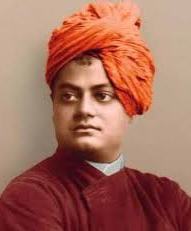 इस पहली यात्रा के शुरूआती स्थान के रूप में सोमनाथ के चयन के पीछे एक ऐतिहासिक - मध्यकालीन और आधुनिक-पृष्ठभूमि थी।
इस पहली यात्रा के शुरूआती स्थान के रूप में सोमनाथ के चयन के पीछे एक ऐतिहासिक - मध्यकालीन और आधुनिक-पृष्ठभूमि थी।
स्वामी विवेकानन्द ने एक स्थान पर मध्यकालीन मूर्तिभंजन का संदर्भ इन शब्दों में दिया है: ”विदेशी आक्रमणकारी एक के बाद एक मंदिर तोड़ता रहा; लेकिन जैसे ही वह वापस जाता, फिर से वहां उसी भव्य रुप में मंदिर खड़ा हो जाता दक्षिण भारत के इन मंदिरों में से कुछ मंदिर और गुजरात के सोमनाथ जैसे अन्य मंदिर आपको भारतवर्ष के इतिहास के बारे में इतना कुछ बता सकते हैं, जो आपकों पुस्तकों के भंडार से भी जानने को नहीं मिलेगा।”
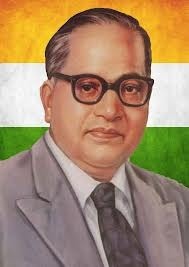 इसी संदर्भ में डा. भीमराव अम्बेडकर को उदृत करना चाहता हूं। डा. अम्बेडकर ने अपनी पुस्तक ‘पाकिस्तान ऑर द पार्टीशन ऑफ इंडिया‘ में सोमनाथ मंदिर पर हुए इन हमलों का उल्लेख करते हुए महमूद गजनवी के इतिहाकार अल उत्बी के वर्णन को उध्दृत किया है: ‘उसने मूर्ति वाले मंदिरों का विध्वंस किया और इस्लाम को स्थापित किया। उसने नगरों पर कब्जा किया और मुसलमानों को खुश करने के लिए मूर्ति-पूजाकों को मारा। उसके बाद अपने राज्य में वापस आकर वह अपना यशोगान करता था कि इस्लाम के लिए उसने कितनी जीतें हासिल की और उसने यह शपथ ली कि हर साल वह हिंद के खिलाफ धर्मयुध्द लड़ेगा।‘
इसी संदर्भ में डा. भीमराव अम्बेडकर को उदृत करना चाहता हूं। डा. अम्बेडकर ने अपनी पुस्तक ‘पाकिस्तान ऑर द पार्टीशन ऑफ इंडिया‘ में सोमनाथ मंदिर पर हुए इन हमलों का उल्लेख करते हुए महमूद गजनवी के इतिहाकार अल उत्बी के वर्णन को उध्दृत किया है: ‘उसने मूर्ति वाले मंदिरों का विध्वंस किया और इस्लाम को स्थापित किया। उसने नगरों पर कब्जा किया और मुसलमानों को खुश करने के लिए मूर्ति-पूजाकों को मारा। उसके बाद अपने राज्य में वापस आकर वह अपना यशोगान करता था कि इस्लाम के लिए उसने कितनी जीतें हासिल की और उसने यह शपथ ली कि हर साल वह हिंद के खिलाफ धर्मयुध्द लड़ेगा।‘
सोमनाथ के ताजा इतिहास के बारे में कुछ जानकारी।
सोमनाथ सौराष्ट्र के जूनागढ़ राज्य में स्थित है। जूनागढ़ की 80 प्रतिशत जनसंख्या हिंदू थी, लेकिन रियासत का नवाब मुसलमान था। स्वतंत्रता की पूर्व संध्या पर नवाब ने अपनी रियासत को पाकिस्तान में मिलाने की घोषणा कर दी। इससे रियासत के हिंदू भड़क उठे और उन्होंने विद्रोह कर दिया। परिणामस्वरुप एक स्थानीय कांग्रेसी नेता सामलदास गांधी के नेतृत्व में एक ‘समानांतर सरकार‘ बनाई गई।
तुरंत पश्चात् नवाब पाकिस्तान भाग गया। सामलदास गांधी ने तब सरदार पटेल को टेलीग्राम भेजा कि जूनागढ़ का भारत में विलय गया है। अपनी पुस्तक में डा. के.एम. मुंशी ‘पिलग्रिमेज टु फ्रीडम‘ में स्मरण करते है कि जब टेलीग्राम पहुंचा तब वह सरदार पटेल के पास थे। सरदार ने इसे मुंशी को थमाते हुए उद्धोषित किया ‘जय सोमनाथ!‘
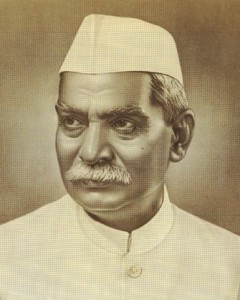 नवम्बर 1947 में सरदार पटेल का जूनागढ़ में गर्मजोशी से स्वागत हुआ। उनके सम्मान में एक जनसभा आयोजित की गई थी, जिसे संबोधित करते हुए सरदार पटेल ने एक अत्यंत महत्वपूर्ण घोषणा की-स्वतंत्र भारत की सरकार ऐतिहासिक सोमनाथ मंदिर का उसी स्थान पर पुनरुध्दार करेगी, जहां प्राचीन काल में वह स्थित रहा था और उसमें ज्योतिर्लिंगम् स्थापित किया जाएगा।
नवम्बर 1947 में सरदार पटेल का जूनागढ़ में गर्मजोशी से स्वागत हुआ। उनके सम्मान में एक जनसभा आयोजित की गई थी, जिसे संबोधित करते हुए सरदार पटेल ने एक अत्यंत महत्वपूर्ण घोषणा की-स्वतंत्र भारत की सरकार ऐतिहासिक सोमनाथ मंदिर का उसी स्थान पर पुनरुध्दार करेगी, जहां प्राचीन काल में वह स्थित रहा था और उसमें ज्योतिर्लिंगम् स्थापित किया जाएगा।
इस कदम को गांधीजी का आशीर्वाद प्राप्त था और नेहरुजी की केबिनेट ने इसको औपचारिक तौर पर स्वीकृत किया। गांधीजी की शर्त इतनी थी कि निर्माण की कीमत लोगों द्वारा वहन की जाए न कि सरकार द्वारा। अत: एक ट्रस्ट गठित किया गया जिसने आवश्यक धन जुटाया। सरदार पटेल जो पुनरुध्दार के बाद इसका लोकार्पण करने वाले थे, का दिसम्बर 1950 में निधन हो गया। अंतत: इसका औपचारिक लोकार्पण राष्ट्रपति राजेन्द्र प्रसाद द्वारा पण्डित नेहरु की मनाही के बाद भी किया गया। इस अवसर पर दिया गया उनका भाषण भारत के किसी राष्ट्रपति द्वारा पंथनिरपेक्षवाद पर दिए गए सबसे महत्वपूर्ण भाषणों में एक है।
‘अपने ध्वंसावशेषों से ही पुन:-पुन: खड़ा होनेवाला सोमनाथ का यह मंदिर पुकार-पुकारकर दुनिया से कह रहा है कि जिसके प्रति लोगों के ह्दय में अगाध श्रध्दा है, उसे दुनिया की कोई भी शक्ति नष्ट नहीं कर सकती। आज जो कुछ हम कर रहे हैं, वह इतिहास के परिमार्जन के लिए नहीं है। हमारा एकमात्र उद्देश्य अपने आदर्शो और श्रध्दा के प्रति अपने लगाव को एक बार फिर दोहराना है, जिनपर आदिकाल से ही हमारे धर्म और धार्मिक विश्वास की इमारत खड़ी हुई है।
यदि 25 सितम्बर, 1990 हमारे लिए सोमनाथ से अयोध्या यात्रा के लिए महत्वपूर्ण है तो इस वर्ष की यह तिथि मात्र एक राज्य-मध्य प्रदेश के पार्टी कार्यकर्ताओं के रिकार्डतोड़ संख्या में भोपाल के सम्मेलन में आने के कारण सदैव हमारी स्मृति में अंकित रहेगी।
भोपाल के जम्बूरी मैदान में आयोजित इस सम्मेलन के मंच पर पार्टी के सभी केन्द्रीय नेता मौजूद थे। उनके सामने 6,49,702 पार्टी कार्यकर्ताओं का संगम था, जिन्होंने इस अनोखे सम्मेलन के लिए औपचारिक रूप से अपने को पंजीकृत कराया था; राज्य के 51 जिलों में फैले 53,896 पोलिंग बूथों से औसतन दस कार्यकर्ता आए थे। इस दिन भोपाल में मैंने जो देखा उससे मुझे सही में महसूस हुआ कि भाजपा के लिए कोई पूर्ण विराम नहीं है।
इस ‘कार्यकर्ता महाकुम्भ‘ के लिए अनेक महीनों से तैयारियां चल रही थी। इन दिनों आगामी चुनावों - विधानसभाओं और लोकसभाई - की तैयारियों के लिए देशभर में विशाल रैलियां आयोजित की जा रही हैं। लेकिन वे जनसभाएं हैं। शिवराज सिंह चौहान और नरेन्द्र सिंह तोमर द्वारा आयोजित यह भोपाल सम्मेलन एक कार्यकर्ता सम्मेलन था। लोगों को नहीं बुलाया गया था। मुझे संदेह है कि देश में कोई अन्य राजनीतिक दल इस किस्म की कोई गतिविधि आयोजित करने की क्षमता भी रखता होगा। किसी ने ठीक ही टिप्पणी की कि: पण्डित दीनदयाल उपाध्याय की स्मृति को श्रध्दांजलि देने हेतु कोई अन्य इससे भी अच्छा कुछ और कर सकता है जो इस वर्ष मध्य प्रदेश ने किया।
यह एक सुखद संयोग है कि गत् सप्ताह मुख्य निर्वाचन आयुक्त द्वारा मध्य प्रदेश हेतु 25 नवम्बर, यानी इस ऐतिहासिक और अभूतपूर्व घटना के ठीक दो महीने के बाद मतदान की तिथि निर्धारित की गई है।
टेलपीस (पश्च्यलेख)
ऊपरी तौर पर, मेरी पहली यात्रा, सोमनाथ से अयोध्या तक को माना जाता है कि यह विश्व हिन्दू परिषद द्वारा अयोध्या में राम मंदिर निर्माण के उद्देश्य को मजबूत करने के उद्देश्य से की गई। परन्तु भाजपा के लिए, इस अभियान के दो स्पष्ट राजनीतिक उद्देश्य भी थे।
(1) असली सेक्युलरिज्म और छद्म सेक्युलरिज्म के बीच बहस चलाना, और
(2) सांस्कृतिक राष्ट्रवाद के मुद्दे को मजबूत करना।
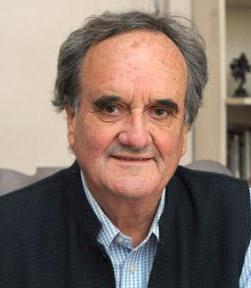 आज के ब्लॉग में मैंने पूर्व ब्लॉग में लिखे गए असली सेक्युलरिज्म सम्बन्धी मार्क टुली के विचारों को हवाला दिया। संस्कृति और धर्म के बारे में उन्होंने ”नो फुल स्टॉप्स इन इण्डिया” पुस्तक में जो लिखा है, मैं उसे उदृत कर रहा हूं।
आज के ब्लॉग में मैंने पूर्व ब्लॉग में लिखे गए असली सेक्युलरिज्म सम्बन्धी मार्क टुली के विचारों को हवाला दिया। संस्कृति और धर्म के बारे में उन्होंने ”नो फुल स्टॉप्स इन इण्डिया” पुस्तक में जो लिखा है, मैं उसे उदृत कर रहा हूं।
मार्क टुली लिखते हैं:
किन्हीं लोगों की संस्कृति और पहचान को नष्ट करने का सर्वाधिक अच्छा तरीका है उनके धर्म और उसकी भाषा को उपेक्षित करना। हम , ब्रिटिशों ने भारत के शासक के रूप में और अब विश्व की प्रभुत्व वाली संस्कृति के रूप में कर रहे हैं। यह सत्य है कि भारत के ब्रिटिश शासक हिन्दुओं के बारे में, विशेष रूप से विद्रोह के बाद ज्यादा सचेत थे। हमने भारत को ईसाइयत में बदलने का प्रयास नहीं किया। लेकिन हमने यह आभास पैदा कर दिया कि हमारा धर्म हिन्दूइज्म से श्रेष्ठ है। कलकत्ता में एक बच्चे के रूप में मुझे स्मरण है कि हमें सिखाया जाता था कि मुस्लिम हिन्दुओं की तुलना में श्रेष्ठ हैं क्योंकि कम से कम वे मूर्तिपूजा नहीं करते।
स्वतंत्रता के समय , भारत ने आधुनिक पश्चिमी विचार को अपनाया कि सामान्य ज्ञान बताता है कि धर्म को सम्पूर्ण रूप से निजी दायरे तक सीमित रखना चाहिए और इसे सभी सार्वजनिक जीवन से दूर रखना होगा। तथ्य यह है कि पश्चिम में बहुसंख्या में लोग धर्म को अपने तक सीमित रखते हैं। ‘आधुनिक‘ भारतीय अपरिहार्य रूप से हमारा उदाहरण अपनाते हैं और जो कोई भी सार्वजनिक जीवन से सभी रूपों में धर्म को अलग रखने में विश्वास नहीं करते, को ‘साम्प्रदायिक‘ माना जाता है, पूर्ण रूप से उनके अपने समुदाय से। अभिजात वर्ग का तथाकथित सेक्युलरिज्म, अपरिहार्य रूप से धर्म के प्रति अनादर के रूप में होता है। लेकिन बहुसंख्यक भारतीयों जो आधुनिकता के लाभों का आनन्द नहीं लेते, अभी भी मानते हैं कि धर्म - उनके जीवन के महत्वपूर्ण तत्वों में से सर्वाधिक जरूरी है।”
लालकृष्ण आडवाणी
नई दिल्ली
8 अक्तूबर, 2013

October 7, 2013
NO FULL STOPS IN BJP
 September 25 is a very important date for all Bharatiya Janata Party workers. It is the Birth Anniversary of our Party’s principal ideologue since its launching as Bharatiya Jana Sangh in 1951, namely, that of Pandit Deendayal Upadhayaya. The party was founded by Dr. Syama Prasad Mookerji. The Jana Sangh contested the First General Elections of 1952 under the leadership of Dr. Mookerji, who had meanwhile nominated Deendayalji as the Party’s first General Secretary. And as General Secretary, Upadhyayaji put together a formidable team of organizers who under the guidance of Dr. Mookerji, laid a firm foundation for the party in all states.
September 25 is a very important date for all Bharatiya Janata Party workers. It is the Birth Anniversary of our Party’s principal ideologue since its launching as Bharatiya Jana Sangh in 1951, namely, that of Pandit Deendayal Upadhayaya. The party was founded by Dr. Syama Prasad Mookerji. The Jana Sangh contested the First General Elections of 1952 under the leadership of Dr. Mookerji, who had meanwhile nominated Deendayalji as the Party’s first General Secretary. And as General Secretary, Upadhyayaji put together a formidable team of organizers who under the guidance of Dr. Mookerji, laid a firm foundation for the party in all states.
Later in 1952, Dr. Mookerji convened the first All India session of the Party at Kanpur. It was while working with Deendayalji for the preparations of this Kanpur conference that Syama Prasadji discovered how talented and versatile Deendayalji was both as a thinker, as well as an ace organizer. One of those days he remarked: “If only I had two or three Deendayals with me I am sure I would be able to change the map of this country!”
 For the title of this blog, I have been inspired by the title of the best book I have read on India by a foreign journalist. He is a journalist whom I have known personally for many years and whom I have always admired. I am referring to Mark Tully, BBC’s correspondent in India and South Asia for 25 years. He was among the 29 foreign journalists whose entry into India was banned during the Emergency. After retirement from the BBC he has settled down in India and lives in New Delhi.
For the title of this blog, I have been inspired by the title of the best book I have read on India by a foreign journalist. He is a journalist whom I have known personally for many years and whom I have always admired. I am referring to Mark Tully, BBC’s correspondent in India and South Asia for 25 years. He was among the 29 foreign journalists whose entry into India was banned during the Emergency. After retirement from the BBC he has settled down in India and lives in New Delhi.
The book I am talking about bears the title “No Full Stops in India.” The book is a compilation of episodes Mark Tully has been witness to, while functioning as a correspondent in India – episodes which have made him acutely alive to the fact that the elite of India is very far removed from Indianness.
When I started writing blogs in January 2009 my second blog was captioned “Understanding Genuine Secularism”. The blog drew a lot from Mark Tully’s Foreword to a Coffee Table pictorial book by Amit Mehra. The Book’s title was INDIA: A Timeless Celebration. I do not propose to repeat all that. It is already part of my book of blogposts, AS I SEE IT.
 What I liked best in the book I have referred to today and which inspired the caption of today’s blog. is his own Introduction. In this, Tully quotes India’s second President, Sarvepalli Radhakrishan saying in a book on the Upanishads: “The characteristic genius of the Indian mind is not to shake the beliefs of the common man but to lead them by stages to the understanding of the deeper philosophical meaning behind their beliefs”. Mark Tully adds: “But the Western World and the Indian elite who emulate it ignore the genius of the Indian mind. They want to write a full stop in a land where there are no full stops.”
What I liked best in the book I have referred to today and which inspired the caption of today’s blog. is his own Introduction. In this, Tully quotes India’s second President, Sarvepalli Radhakrishan saying in a book on the Upanishads: “The characteristic genius of the Indian mind is not to shake the beliefs of the common man but to lead them by stages to the understanding of the deeper philosophical meaning behind their beliefs”. Mark Tully adds: “But the Western World and the Indian elite who emulate it ignore the genius of the Indian mind. They want to write a full stop in a land where there are no full stops.”
I have seen my party evolve very systematically since 1951. Apart from campaigning continuously without a break in all the General Elections held in the country since 1952 I have undertaken six countrywide yatras. The first of these yatras was the Somnath to Ayodhya yatra which commenced on September 25, 1990. The yatra was to conclude at Ayodhya on October 30. But it was interrupted by the Bihar Government then headed by Laloo Prasad Yadav, at Samastipur. On October 23, I was arrested and transported to Massanjore on the border of Bihar and West Bengal. That brought about the end of V.P. Singh’s government ― thanks only to Laloo Prasad.
 My choice of Somnath as the starting point of this first yatra had a historical background, both of mediaeval history as well as modern history.
My choice of Somnath as the starting point of this first yatra had a historical background, both of mediaeval history as well as modern history.
Swami Vivekananda has at one place referred to mediaeval iconoclasm in these words: “Temple after temple was broken down by the foreign conqueror, but no sooner had the wave passed than the spire of the temple rose up again. Some of these old temples of South India, and those like Somnath in Gujarat, will teach you volumes of wisdom which will give you a keener insight into the history of the race than any amount of books.”
 Let me also cite Dr. B.R. Ambedkar in the same context. In his book titled Pakistan or The Partition of India, Dr. Ambedkar refers to the raids on Somnath and quotes Al’Utbi, the historian of Mahmood Ghazni: “He demolished idol temples and established Islam. He captured…. cities and destroyed the idolaters, gratifying Muslims. He then returned home and promulgated accounts of the victories obtained for Islam….and vowed that every year he would undertake a holy war against Hind.”
Let me also cite Dr. B.R. Ambedkar in the same context. In his book titled Pakistan or The Partition of India, Dr. Ambedkar refers to the raids on Somnath and quotes Al’Utbi, the historian of Mahmood Ghazni: “He demolished idol temples and established Islam. He captured…. cities and destroyed the idolaters, gratifying Muslims. He then returned home and promulgated accounts of the victories obtained for Islam….and vowed that every year he would undertake a holy war against Hind.”
Let me now speak about Somnath’s recent history.
Somnath is located in Junagarh State in Saurashtra. It had a 80 per cent Hindu population. But its Nawab was a Muslim. On the eve of independence, before Sardar Patel had even started his process of Integration of States, the Nawab announced accession of Junagarh to Pakistan! The people reacted in anger and publicly disowned the Nawab. In a mammoth public meeting a reputed Congress leader, Samaldas Gandhi, was declared head of a ‘parallel government’.
Soon thereafter, the Nawab fled to Pakistan. Samaldas Gandhi then sent a telegram to Sardar Patel that Junagarh had acceded to India. In his book Pilgrimage to Freedom, Dr. K.M. Munshi recalls that he was with Sardar Patel when the telegram arrived. Sardar handed it over to Munshi and exclaimed: “Jai Somnath!”
 In November, 1947, Sardar Patel received a rousing welcome at Junagarh. In a huge public meeting he declared that the Government of independent India would reconstruct the historic temple at the same site where it was in ancient times, and reinstall the jyotirlingam. The move was blessed by Gandhiji, and formally approved by Nehruji’s Cabinet. Gandhiji’s only condition was that the construction cost should be borne by the people and not by Government. So a Trust was created which raised the necessary funds. In December 1950, Sardar Patel who was due to open it after its reconstruction passed away. So the formal inauguration was done by Rashtrapati Rajendra Prasad, even though Pandit Nehru asked him not to do so.
In November, 1947, Sardar Patel received a rousing welcome at Junagarh. In a huge public meeting he declared that the Government of independent India would reconstruct the historic temple at the same site where it was in ancient times, and reinstall the jyotirlingam. The move was blessed by Gandhiji, and formally approved by Nehruji’s Cabinet. Gandhiji’s only condition was that the construction cost should be borne by the people and not by Government. So a Trust was created which raised the necessary funds. In December 1950, Sardar Patel who was due to open it after its reconstruction passed away. So the formal inauguration was done by Rashtrapati Rajendra Prasad, even though Pandit Nehru asked him not to do so.
Describing Somnath Temple as a symbol of national faith, the President said: “By rising from its ashes again, this temple of Somnath is proclaiming to the world that no man and no power in the world can destroy that for which people have boundless faith and love in their hearts…Today, our attempt is not to rectify history. Our only aim is to proclaim anew our attachment to the faith, convictions and to the values on which our religion has rested since immemorial ages.”
If September 25 of 1990 was important for us in the BJP because of this Somnath to Ayodhya yatra, the same date this year, that is just last month, will always remain etched in our memories because of the all time record number of party activists who assembled at Bhopal, and that too activists of just one state – Madhya Pradesh.
On the stage were all central leaders of the Party. Assembled at the Bhopal Jambooree Maidan in front of them were as many as exactly 6,49,702 party workers, who had formally registered themselves for this unique conclave, with averagely at least 10 drawn from each of the 53,896 polling stations spread over 51 districts of the State. It is what I witnessed this day in Bhopal that made me sincerely feel that for BJP, there are no full stops.
Preparations for this ‘Karyakarta Mahakumbh’ had been going on for several months. These days, as part of the preparations for the coming elections - Assemblies and Lok Sabha - massive rallies are being organised all over the country. But they are public rallies. The Bhopal conclave planned by Shivraj Singh Chauhan and Narendra Singh Tomar was a karyakarta sammelan. The public was not invited. I doubt if any other political party in the country has even the capability of achieving anything of this kind. Someone rightly remarked: No one could have conceived a better tribute to Pandit Deendayal Upadhyaya’s memory than what Madhya Pradesh has done this year.
It is just a happy coincidence that in the schedule of polls announced by the Chief Election Commissioner last week, polling for Madhya Pradesh has been fixed for November 25, exactly two months after this historic, record breaking event.
TAILPIECE
Overtly, this first yatra of mine, Somnath to Ayodhya seemed only to fortify the VHP objective of having a Rama Temple at Ayodhya. But for the BJP, the campaign had two clear political objectives also:
(a) to project a debate between genuine secularism; and pseudo secularism and
(b) to strengthen the cause of cultural nationalism.
 I have referred in today’s blog to Mark Tully’s comments in an earlier blog on genuine secularism. Let me quote what he has written in his “No Full Stops in India” about culture and religion.
I have referred in today’s blog to Mark Tully’s comments in an earlier blog on genuine secularism. Let me quote what he has written in his “No Full Stops in India” about culture and religion.
Mark Tully writes:
“The best way to destroy a people’s culture and identity is to undermine its religion and its language. We, the British, did that as India’s rulers and we continue to do that as part of the dominant culture of the world now. It is true that the British rulers of India were very cautious about Hinduism, especially after the Mutiny. Unlike some colonial powers, we did not attempt to convert India to Christianity. But we did create the impression that our religion was superior to Hinduism. As a child in Calcutta, I remember being told that Muslims were superior to Hindus because at least they did not worship idols.
At independence, India adopted the contemporary Western view that common sense dictates that religion be confined entirely to the personal domain and kept out of all public life – to put it at its kindest. What in fact the majority of people in the West have done is to consign religion to the rubbish bin. ‘Modern’ Indians inevitably follow our example, and anyone who does not believe in keeping religion out of all forms of public life is regarded as ‘communal’ – that is to say, totally biased in favour of his own religious community. The elite’s so-called secularism inevitably degenerates into disrespect for religion. But the vast majority of Indians, who do not enjoy the benefits of modernity, still believe that religion is one of the most – if not the most – important factors in their lives.”
L.K. Advani
New Delhi
October 8, 2013

October 6, 2013
सर्वोच्च न्यायालय द्वारा प्रस्तावित नकारात्मक वोट
भारत 1947 में स्वतंत्र हुआ। राष्ट्र के लिए ब्रिटिश शासन से स्वतंत्रता पाना एक युगान्तरकारी घटना थी। परन्तु लाखों लोगों के लिए यह ऐतिहासिक घटनाक्रम विभाजन की विभीषिका लेकर आया जिसने इससे उत्पन्न होने वाले आनन्द को नीरस बना दिया।
व्यक्तिगत् रुप से, अपने जीवन के पहले बीस वर्ष मैंने सिंध की राजधानी कराची में बिताए। पाकिस्तान बनने के बाद कराची तब तक नए देश की राजधानी रहा जब तक रावलपिण्डी के पास इस्लामाबाद बनकर तैयार नहीं हुआ।
 सन् 1942 में मैंने हाई स्कूल की परीक्षा पास की थी और तभी मैं राष्ट्रीय स्वयंसेवक संघ का स्वयंसेवक बना तथा यह मेरे जीवन का सर्वाधिक महत्वपूर्ण नया मोड़ मोड़ था। इसने पूरे जीवन भर मेरी सोच और व्यवहार को प्रभावित किया। मैं राष्ट्रीय स्वयंसेवक संघ का प्रचारक था। विभाजन के बाद, सिंध के अधिकांश संघ प्रचारकों को राजस्थान में जिम्मेवारियां दी गई। अत: 1947 से 1957 तक, मैं राजस्थान में पहले अलवर, फिर भरतपुर, बाद में कोटा और अंत में जयपुर में रहा। स्वतंत्रता के पहले दशक में, भारतीय संविधान अंगीकृत किए जाने के एक वर्ष पश्चात् ही डा. श्यामा प्रसाद मुकर्जी ने भारतीय जनसंघ के गठन का निर्णय किया, जो आज भारतीय जनता पार्टी के रुप में सक्रिय है।
सन् 1942 में मैंने हाई स्कूल की परीक्षा पास की थी और तभी मैं राष्ट्रीय स्वयंसेवक संघ का स्वयंसेवक बना तथा यह मेरे जीवन का सर्वाधिक महत्वपूर्ण नया मोड़ मोड़ था। इसने पूरे जीवन भर मेरी सोच और व्यवहार को प्रभावित किया। मैं राष्ट्रीय स्वयंसेवक संघ का प्रचारक था। विभाजन के बाद, सिंध के अधिकांश संघ प्रचारकों को राजस्थान में जिम्मेवारियां दी गई। अत: 1947 से 1957 तक, मैं राजस्थान में पहले अलवर, फिर भरतपुर, बाद में कोटा और अंत में जयपुर में रहा। स्वतंत्रता के पहले दशक में, भारतीय संविधान अंगीकृत किए जाने के एक वर्ष पश्चात् ही डा. श्यामा प्रसाद मुकर्जी ने भारतीय जनसंघ के गठन का निर्णय किया, जो आज भारतीय जनता पार्टी के रुप में सक्रिय है।
 डा. श्यामा प्रसाद मुकर्जी द्वारा सन् 1951 में की गई इस पहल के चलते अनेक ऐसे लोग इसकी ओर आकर्षित हुए जिन्होंने पार्टी को इतना शक्तिशाली बनाया जैसाकि आज देखने को मिलती है। ऐसे समर्पित देशभक्तों में पण्डित दीनदयाल उपाध्याय, नानाजी देशमुख, अटल बिहारी वाजपेयी, कुशाभाऊ ठाकरे, जगन्नाथ राव जोशी, सुंदरसिंह भण्डारी, कैलाशपति मिश्रा, पी. परमेश्वरन, विष्णुकांत शास्त्री, जगदीश प्रसाद माथुर और ऐसे अनेक जिनकी सत्ता की राजनीति में कोई रुचि नहीं थी अपितु एकमात्र चिंता भारत को महान बनाने की थी।
डा. श्यामा प्रसाद मुकर्जी द्वारा सन् 1951 में की गई इस पहल के चलते अनेक ऐसे लोग इसकी ओर आकर्षित हुए जिन्होंने पार्टी को इतना शक्तिशाली बनाया जैसाकि आज देखने को मिलती है। ऐसे समर्पित देशभक्तों में पण्डित दीनदयाल उपाध्याय, नानाजी देशमुख, अटल बिहारी वाजपेयी, कुशाभाऊ ठाकरे, जगन्नाथ राव जोशी, सुंदरसिंह भण्डारी, कैलाशपति मिश्रा, पी. परमेश्वरन, विष्णुकांत शास्त्री, जगदीश प्रसाद माथुर और ऐसे अनेक जिनकी सत्ता की राजनीति में कोई रुचि नहीं थी अपितु एकमात्र चिंता भारत को महान बनाने की थी।
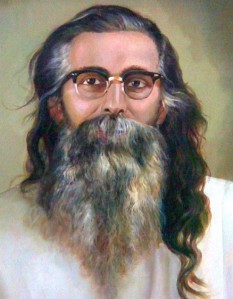 जिनका उल्लेख मैंने ऊपर किया उनमें से अधिकांश राष्ट्रीय स्वयंसेवक संघ के प्रचारक थे और जनसंघ में उनके द्वारा संभाली गई जिम्मेदारियां डा. मुकर्जी और राष्ट्रीय स्वयंसेवक संघ के सरसंघचालक श्री गुरुजी (श्री माधव सदाशिव गोलवलकर) के बीच जनसंघ के गठन के समय हुई महत्वपूर्ण बैठक का नतीजा था।
जिनका उल्लेख मैंने ऊपर किया उनमें से अधिकांश राष्ट्रीय स्वयंसेवक संघ के प्रचारक थे और जनसंघ में उनके द्वारा संभाली गई जिम्मेदारियां डा. मुकर्जी और राष्ट्रीय स्वयंसेवक संघ के सरसंघचालक श्री गुरुजी (श्री माधव सदाशिव गोलवलकर) के बीच जनसंघ के गठन के समय हुई महत्वपूर्ण बैठक का नतीजा था।
मुझे पण्डित दीनदयालजी की वह सलाह याद आती है जब उन्होंने मुझे 1957 में राजस्थान से दिल्ली आकर श्री वाजपेयीजी का सहयोग करने को कहा। वाजपेयीजी पहली बार संसद में चुनकर आए थे और मुझे पार्टी की संसदीय इकाई गठित करने को कहा गया। उन्होंने मुझे यह भी कहा कि मैं दुनिया के विभिन्न लोकतंत्रों में प्रचलित निर्वाचन पध्दतियों का भी अध्ययन करने के साथ-साथ निर्वाचन सुधारों के मुद्दे पर अपना ध्यान केंद्रित करुं जोकि भारत को एक सच्चा सफल और जीवंत लोकतंत्र बना सकें।
तब से यदि किसी विशेष मुद्दे पर मैंने अपना सर्वाधिक ध्यान केंद्रित किया है तो वह है निर्वाचन सुधार।
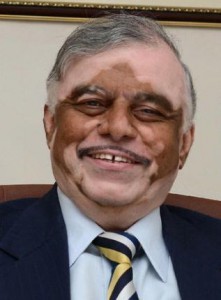 गत् सप्ताह पीपुल्स यूनियन फॉर सिविल लिबर्टीज की जनहित याचिका पर मुख्य न्यायाधीश सथाशिवम की पीठ ने मतदाताओं को नकारात्मक वोट (नेगेटिव वोट)देने की इच्छा के पक्ष में अपना निर्णय दिया है। सर्वोच्च न्यायालय ने सुझाया है कि अब से इलेक्ट्रानिक वोटिंग मशीनों पर न केवल चुनाव लड़ने वाले प्रत्याशियों के लिए ‘बटन‘ हों अपितु एक अतिरिक्त ‘बटन‘ ‘नोटा‘ (Nota) नाम से भी होना चाहिए जिसका अर्थ है ‘इनमें से कोई नहीं।
गत् सप्ताह पीपुल्स यूनियन फॉर सिविल लिबर्टीज की जनहित याचिका पर मुख्य न्यायाधीश सथाशिवम की पीठ ने मतदाताओं को नकारात्मक वोट (नेगेटिव वोट)देने की इच्छा के पक्ष में अपना निर्णय दिया है। सर्वोच्च न्यायालय ने सुझाया है कि अब से इलेक्ट्रानिक वोटिंग मशीनों पर न केवल चुनाव लड़ने वाले प्रत्याशियों के लिए ‘बटन‘ हों अपितु एक अतिरिक्त ‘बटन‘ ‘नोटा‘ (Nota) नाम से भी होना चाहिए जिसका अर्थ है ‘इनमें से कोई नहीं।
सर्वोच्च न्यायालय की इस सलाह का सामान्य तौर पर स्वागत हुआ है। यहां तक कि निर्वाचन आयोग ने कहा है कि उसे इलेक्ट्रानिक वोटिंग मशीनों (ईवीएम) पर एक और बटन लगाने में कोई कठिनाई नहीं है।
आज की स्थिति में, मतदाता बगैर किसी औचित्य के, संविधान द्वारा प्रदत्त अपने मत देने के महत्वपूर्ण अधिकारी का उपयोग नहीं करते, अत: अनजाने में वह सभी चुनाव लड़ रहे प्रत्याशियों के विरूध्द अपना वोट न चाहते हुए भी देते हैं। इसलिए मैं मानता हूं कि नकारात्मक वोट तभी सचमुच में अर्थपूर्ण बनेगा जब उसके साथ मतदान अनिवार्य कर दिया जाए। भारत में गुजरात एकमात्र ऐसा राज्य है जहां इस दिशा में पहल की गई है। नरेन्द्र मोदी के नेतृत्व में राज्य विधानसभा ने दो बार अनिवार्य मतदान का कानून बनाया है लेकिन इसको न तो राज्यपाल और न ही नई दिल्ली की स्वीकृति मिली है।
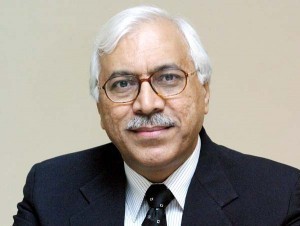 पूर्व मुख्य निर्वाचन आयुक्त श्री एस.वाई. कुरैशी ने इस सप्ताह दो सुंदर लेख-एक, दि इक्नॉमोक्सि टाइम्स (2 अक्तूबर, 2013) और दूसरा, दि इण्डियन एक्सप्रेस (3 अक्तूबर, 2013) लिखे हैं जिसमें उन्होंने इस फैसले के परिणामों को विश्लेषित करने का प्रयास किया है और सारांश रूप में कहा है कि यदि नापसंद करने का अधिकार वास्तव में लागू किया गया तो कुछ समस्याएं खड़ी होंगी जिनका समाधान निकाला जाना चाहिए। कुल मिलाकर, उन्होंने कहा कि सर्वोच्च न्यायालय के निर्णय ने स्वागतयोग्य बहस को जन्म दिया है।
पूर्व मुख्य निर्वाचन आयुक्त श्री एस.वाई. कुरैशी ने इस सप्ताह दो सुंदर लेख-एक, दि इक्नॉमोक्सि टाइम्स (2 अक्तूबर, 2013) और दूसरा, दि इण्डियन एक्सप्रेस (3 अक्तूबर, 2013) लिखे हैं जिसमें उन्होंने इस फैसले के परिणामों को विश्लेषित करने का प्रयास किया है और सारांश रूप में कहा है कि यदि नापसंद करने का अधिकार वास्तव में लागू किया गया तो कुछ समस्याएं खड़ी होंगी जिनका समाधान निकाला जाना चाहिए। कुल मिलाकर, उन्होंने कहा कि सर्वोच्च न्यायालय के निर्णय ने स्वागतयोग्य बहस को जन्म दिया है।
पूर्व मुख्य निर्वाचन आयुक्त के लेख संकेत करते हैं कि सर्वोच्च न्यायालय के प्रावधान वास्तव में नकारात्मक वोट नहीं हैं। वास्तव में यह मुख्य रूप से किसी को भी वोट न देने (Abstention vote) वाला है।
आज दुनिया में 31 ऐसे देश हैं जहां के कानून किसी न किसी रूप में अनिवार्य मतदान पध्दति का प्रावधान करते हैं। परन्तु प्रेक्षकों के मुताबिक इन कानूनों का विवरण इस तरह का है कि इनमें से केवल एक दर्जन ही बगैर किसी न्यायोचित कारण के अनिवार्य मतदान न करने की स्थिति में नागरिकों पर दण्ड देने का प्रावधान रखते हैं।
सर्वोच्च न्यायालय के निर्णय में सात देशों उल्लेख किया गया है और अमेरिका का एक राज्य है जहां मतदाताओं को मत पत्र दिया जाता है या इलेक्ट्रॉनिक वोटिंग मशीनों में
‘नोटा‘ (नकारात्मक वोट) का प्रावधान होता है। जिन सात देशों का उल्लेख सर्वोच्च न्यायालय ने किया है उनमें फ्रांस, बेल्जियम, ब्राजील, ग्रीस, चिली, बंगलादेश और यूक्रेन हैं। जिस अमेरिकी राज्य का उल्लेख किया गया है वह है नेवादा। जिस तथ्य को मैं ज्यादा महत्वपूण्र्
मैं मानता हूं वह है कि मेरे द्वारा वर्णित जिन पांच देशों में मतदाताओं हेतु ‘नोटा‘ (नकारात्मक वोट) का प्रावधान है, ऐसे फ्रांस, बेल्जियम, ब्राजील, ग्रीस और चिली में अनिवार्य मतदान का भी प्रावधान है।
शेष 26 देश जिनमें किसी न किसी प्रकार के अनिवार्य मतदान का प्रावधान है, वे हैं: आस्ट्रिया, अर्जेन्टीना, आस्ट्रेलिया, बोलिविया, कोस्टा, रीका, साइप्रस, डोमिनियन रिपब्लिक, इक्वाडोर, मिश्र, फिजी, गबॉन, ग्वाटेमाला, होंडारस, इटली, लिंचिस्टाइन, लक्सम्बर्ग, मैक्सिको, नेरु, प्राग, पेरू, फिलीपीन, सिंगापुर, स्विटजरलैण्ड (Province of Schaffhausen) थाईलैण्ड, तुर्की और उरूगे।
व्यक्तिगत रूप से मैं महसूस करता हूं कि यदि निर्वाचन आयोग एक ओर सर्वोच्च न्यायालय के निर्णय की प्रति और दूसरी ओर इन 31 देशों के कानूनों तथा नियमों सम्बन्धी विस्तृत रिपोर्ट देने के साथ-साथ सभी राजनीतिक दलों की बैठक बुलाता है तो इस समूचे मुद्दे पर एक उद्देश्यपूर्ण बहस हो सकती है।
लालकृष्ण आडवाणी
नई दिल्ली
6 अक्तूबर, 2013

October 5, 2013
SUPREME COURT PROPOSES NEGATIVE VOTE
India became independent in 1947. For the nation, achievement of independence from British rule was a landmark event. But for millions, that this epochal happening was accompanied by the trauma of partition denuded it of all the joy such an event would have ordinarily brought.
Personally, I spent the first twenty years of my life in Karachi, the capital of Sindh. After the creation of Pakistan, Karachi became the capital of the new state and remained as such until a new capital near Rawalpindi, named Islamabad, was constructed.
 In 1942 when I had just passed out of High School, I became a swayamsewak of the RSS, and that became the biggest turning point in my life. It has influenced my thinking and conduct all through my life. In 1947, I was a pracharak (whole timer) of the RSS. After partition, most RSS pracharaks in Sindh were assigned responsibilities in Rajasthan. So from 1947 to 1957, I was in Rajasthan – first in Alwar, then in Bharatpur, later in Kota and finally in Jaipur. It was during this first decade of independence that just one year after the adoption of the Indian Constitution, Dr. Syama Prasad Mookerji decided to launch the Bharatiya Jana Sangh, which today functions as the Bharatiya Janata Party.
In 1942 when I had just passed out of High School, I became a swayamsewak of the RSS, and that became the biggest turning point in my life. It has influenced my thinking and conduct all through my life. In 1947, I was a pracharak (whole timer) of the RSS. After partition, most RSS pracharaks in Sindh were assigned responsibilities in Rajasthan. So from 1947 to 1957, I was in Rajasthan – first in Alwar, then in Bharatpur, later in Kota and finally in Jaipur. It was during this first decade of independence that just one year after the adoption of the Indian Constitution, Dr. Syama Prasad Mookerji decided to launch the Bharatiya Jana Sangh, which today functions as the Bharatiya Janata Party.
 It was this initiative taken by Dr. S.P. Mookerji in 1951 which drew into politics most of those who have made the party as powerful a force as it is today – dedicated patriots like Pandit Deendayal Upadhyaya, Nanaji Deshmukh, Atal Bihari Vajpayee, Kushabhau Thakre, Jagannath Rao Joshi, Sunder Singh Bhandari, Kailashpati Mishra, P. Parameshwaran, Vishnukant Shastri, Jagdish Prasad Mathur and such others, who had no interest in power politics, and whose sole concern was India’s greatness.
It was this initiative taken by Dr. S.P. Mookerji in 1951 which drew into politics most of those who have made the party as powerful a force as it is today – dedicated patriots like Pandit Deendayal Upadhyaya, Nanaji Deshmukh, Atal Bihari Vajpayee, Kushabhau Thakre, Jagannath Rao Joshi, Sunder Singh Bhandari, Kailashpati Mishra, P. Parameshwaran, Vishnukant Shastri, Jagdish Prasad Mathur and such others, who had no interest in power politics, and whose sole concern was India’s greatness.
 Most of those I have named above were R.S.S. pracharaks at the time and their being assigned responsibility in the Jana Sangh was the result of an important meeting Dr. Mookerji had with the RSS Sar Sangh Chalak, Shri Guruji (Shri M.S. Golwalkar) just about the time he launched the Jana Sangh.
Most of those I have named above were R.S.S. pracharaks at the time and their being assigned responsibility in the Jana Sangh was the result of an important meeting Dr. Mookerji had with the RSS Sar Sangh Chalak, Shri Guruji (Shri M.S. Golwalkar) just about the time he launched the Jana Sangh.
I recall Pandit Deendayalji’s advice to me when he asked me to come from Rajasthan to Delhi in 1957 to assist Shri Vajpayee, when he was first elected to Parliament and to build up the party’s parliamentary wing. You should also try, he told me, to study the various electoral systems prevalent in different democracies of the world and concentrate on the issue of electoral reforms that can make India a truly successful and vibrant democracy.
If there is any specific political issue on which I have devoted focussed attention since then it is this matter of poll reform.
 Last week following a PIL filed by the People’s Union for Civil Liberties, a Supreme Court Bench headed by Chief Justice Sathasivam has expressed itself in favour of voters being given a choice to exercise a negative vote. The Supreme Court has suggested that electronic machines hereafter should have buttons not only for the various contesting candidates but also one additional button marked NOTA meaning None Of The Above.
Last week following a PIL filed by the People’s Union for Civil Liberties, a Supreme Court Bench headed by Chief Justice Sathasivam has expressed itself in favour of voters being given a choice to exercise a negative vote. The Supreme Court has suggested that electronic machines hereafter should have buttons not only for the various contesting candidates but also one additional button marked NOTA meaning None Of The Above.
The Supreme Court’s advice has generally been welcomed. Even the Election Commission has said that it would have no difficulty adding this one button to the EVMs they are having manufactured.
As things stand today, voters who without any legitimate justification have not been exercising the valuable right of franchise the Indian Constitution has conferred on them have, unwittingly thus, been casting a negative vote against all the contesting candidates without intending to do so. I hold therefore that a negative vote would become really meaningful if it is accompanied also by the introduction of mandatory voting. The only state in India which has on its own initiative moved in this direction is Gujarat. Under Narendra Modi its Assembly has twice legislated for compulsory voting but the Bill has not received the assent of the Governor, or even of New Delhi.
 Former Chief Election Commissioner Shri S.Y. Quraishi has written two very good articles this week, one in The Economic Times (Oct 2, 2013) and the second in The Indian Express (Oct 3, 20-13) in which he has attempted to analyse the implications of the verdict and summed it up by saying that if the right to reject is actually implemented it would result in some problems which have to be sorted out. On the whole, he said, the apex court judgement has touched off a welcome debate.
Former Chief Election Commissioner Shri S.Y. Quraishi has written two very good articles this week, one in The Economic Times (Oct 2, 2013) and the second in The Indian Express (Oct 3, 20-13) in which he has attempted to analyse the implications of the verdict and summed it up by saying that if the right to reject is actually implemented it would result in some problems which have to be sorted out. On the whole, he said, the apex court judgement has touched off a welcome debate.
The former CEC’s articles also indicate that the Supreme Court’s proposal is not really a rejection vote. It is essentially an abstention vote.
Today there are in the world as many as 31 countries whose laws provide for some kind of compulsory voting system. But the details of these laws are such that observers feel that it is only one dozen of these that actually enforce compulsory voting by having deterrent provisions for citizens who fail to vote without any justified reason.
The Supreme Court’s judgement mentions seven countries and one state of U.S.A. where the Ballot Paper given to voters or the EVMs, have a NOTA option. The seven countries named by the Supreme Court are France, Belgium, Brazil, Greece, Chile, Bangladesh and Ukraine. The one state of U.S.A. mentioned is Nevada. What I regard as significant is the fact that out of the seven countries which have given the electors a NOTA option the first five listed by me, namely, France, Belgium, Brazil, Greece and Chile have compulsory voting also.
The remaining 26 countries having some sort of compulsory voting arrangement are: Austria, Argentina, Australia, Bolivia, Costa Rica, Cyprus, Dominican Republic, Eckador, Egypt, Fiji, Gabon, Guatemala, Honduras, Italy, Liechtenstein, Luxembourg, Mexico, Nauru, Paraguay, Peru, Phillipines, Singapore, Switzerland (Province of Schafthausen), Thailand, Turkey and Uruguay.
I personally feel that if the Election Commission can convene a meeting of all political parties after providing them on the one hand the text of the Supreme Court judgement, and on the other, a comprehensive report on the laws and rules in these thirty one countries, a purposeful debate on the entire issue can take place.
L.K. Advani
New Delhi
6 October, 2013

राहुल नहीं, प्रणव दा ने बचाई इज्जत
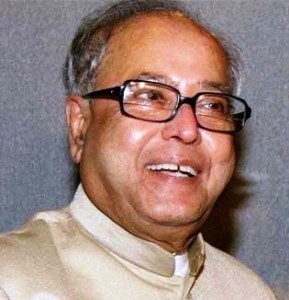 गत् बुधवार को मंत्रिमंडल द्वारा दागी सांसदों एवं विधायकों से सम्बन्धित अध्यादेश तथा साथ ही इस संदर्भ में संसद में लम्बित विधेयक वापस लेने से यूपीए सरकार के भौण्डे इतिहास का एक और भद्दा अध्याय समाप्त हो गया है।
गत् बुधवार को मंत्रिमंडल द्वारा दागी सांसदों एवं विधायकों से सम्बन्धित अध्यादेश तथा साथ ही इस संदर्भ में संसद में लम्बित विधेयक वापस लेने से यूपीए सरकार के भौण्डे इतिहास का एक और भद्दा अध्याय समाप्त हो गया है।
इस घटनाक्रम पर अधिकार मीडिया रिपोर्टों द्वारा इसे राहुल गांधी की विजय बताया जाना-इन दिनों मीडिया द्वारा सामान्य तौर पर की जा रही सतही रिपोर्टिंग पर एक टिप्पणी है।
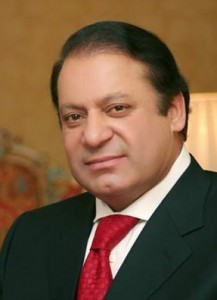
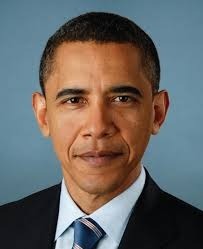 वास्तव में, अमेरिका में राष्ट्रपति ओबामा तथा पाकिस्तानी प्रधानमंत्री नवाज शरीफ से मिलने के बाद रवाना होते समय प्रधानमंत्री डा. मनमोहन सिंह ने कहा कि वह वापस लौटने के बाद अध्यादेश के बारे में पार्टी के उपाध्यक्ष द्वारा उठाए गए मुद्दों के बारे में अपने मंत्रिमंडलीय सहयोगियों से बात करेंगे, इस पर मैंने अपने एक मित्र से कहाकि साढ़े तीन मिनट के अपने भाषण में राहुल गांधी ने जो कुछ कहा है वह कुल मिलाकर यह है कि विधेयक ‘एकदम बकवास‘ है और यह फाड़कर फेंकने लायक है।‘
वास्तव में, अमेरिका में राष्ट्रपति ओबामा तथा पाकिस्तानी प्रधानमंत्री नवाज शरीफ से मिलने के बाद रवाना होते समय प्रधानमंत्री डा. मनमोहन सिंह ने कहा कि वह वापस लौटने के बाद अध्यादेश के बारे में पार्टी के उपाध्यक्ष द्वारा उठाए गए मुद्दों के बारे में अपने मंत्रिमंडलीय सहयोगियों से बात करेंगे, इस पर मैंने अपने एक मित्र से कहाकि साढ़े तीन मिनट के अपने भाषण में राहुल गांधी ने जो कुछ कहा है वह कुल मिलाकर यह है कि विधेयक ‘एकदम बकवास‘ है और यह फाड़कर फेंकने लायक है।‘
इस कु्रध्द टिप्पणी में ऐसा क्या था जिसे प्रधानमंत्री अपने मंत्रिमंडल से सलाह-मशिवरा करते?
आखिरकार राहुल गांधी ने एक भी तर्क नहीं दिया कि वह क्यों मानते हैं कि अध्यादेश गलत है। इसकी तुलना में, जब 26 सितम्बर की शाम को दोनों सदनों में हमारे नेताओं श्रीमती सुषमा स्वराज और श्री अरुण जेटली और मैं जब राष्ट्रपति भवन गए और राष्ट्रपति को चार पृष्ठों का ज्ञापन सौंपा तब हमारे ज्ञापन में उल्लेख किया गया था कि क्यों हम इस अध्यादेश को न केवल असंवैधानिक और गैर-कानूनी मानते हैं अपितु अनैतिक भी, साथ ही प्रक्रियागत रुप से भी गलत क्योंकि यह अध्यादेश जिस विधेयक का स्थान लेने वाला था उसे पहले ही राज्यसभा की स्थायी समिति को भेजा जा चुका था।
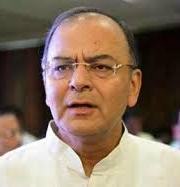
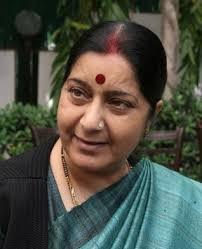 मुझे स्मरण आता है कि 24 सितम्बर मंगलवार को मंत्रिमंडल ने अध्यादेश को स्वीकृत दी जिसमें दागी सांसदों और विधायकों सम्बन्धी सर्वोच्च न्यायालय के निर्णय को निष्प्रभावी बनाना था। विपक्ष की और से पहली प्रतिक्रिया सुषमाजी का ट्वीट था कि भाजपा इस अध्यादेश का विरोध करेगी। उसके कुछ ही समय बाद उन्होंने मुझसे परामर्श किया और हमने राष्ट्रपति से मिलकर यह अनुरोध करने का निर्णय लिया कि वे इस पर हस्ताक्षर न करें। जब उन्होंने राष्ट्रपति भवन से समय लेने हेतु सम्पर्क किया तो उन्हें ज्ञात हुआ कि राष्ट्रपति पुडुच्चेरी गए हुए हैं और 26 सितम्बर को शाम 4 बजे ही लौटेंगे।
मुझे स्मरण आता है कि 24 सितम्बर मंगलवार को मंत्रिमंडल ने अध्यादेश को स्वीकृत दी जिसमें दागी सांसदों और विधायकों सम्बन्धी सर्वोच्च न्यायालय के निर्णय को निष्प्रभावी बनाना था। विपक्ष की और से पहली प्रतिक्रिया सुषमाजी का ट्वीट था कि भाजपा इस अध्यादेश का विरोध करेगी। उसके कुछ ही समय बाद उन्होंने मुझसे परामर्श किया और हमने राष्ट्रपति से मिलकर यह अनुरोध करने का निर्णय लिया कि वे इस पर हस्ताक्षर न करें। जब उन्होंने राष्ट्रपति भवन से समय लेने हेतु सम्पर्क किया तो उन्हें ज्ञात हुआ कि राष्ट्रपति पुडुच्चेरी गए हुए हैं और 26 सितम्बर को शाम 4 बजे ही लौटेंगे।
उसी दिन हम उनसे शाम 5.30 बजे मिले और उनके साथ लगभग 45 मिनट थे। हमारी मुलाकात की समाप्ति पर हमें यह साफ लगा कि वह इससे सहमत थें कि इस स्थिति में उनका हस्तक्षेप जरुरी है।
उसके थोड़ी देर बाद जब टी.वी. चैनलों ने दिखाना शुरु किया कि उन्होंने शिंदे और सिब्बल तथा बाद में कमलनाथ को बुलाया है, तो यह और साफ हो गया कि घटनाक्रम इस दिशा में बढ़ना शुरु हो गया है।
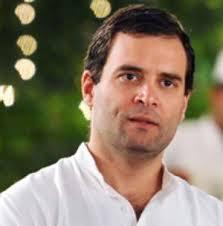 ऐसा प्रतीत होता है कि इन मंत्रियों को बता दिया गया है कि राष्ट्रपति को इस अध्यादेश पर हस्ताक्षर करने पर ऐतराज है। इससे अवश्य ही मंत्रियों के कान खड़े हुए होंगे। राष्ट्रपति द्वारा अध्यादेश को बगैर हस्ताक्षर के वापस लौटाना सरकार के लिए बड़ा धक्का होता।
ऐसा प्रतीत होता है कि इन मंत्रियों को बता दिया गया है कि राष्ट्रपति को इस अध्यादेश पर हस्ताक्षर करने पर ऐतराज है। इससे अवश्य ही मंत्रियों के कान खड़े हुए होंगे। राष्ट्रपति द्वारा अध्यादेश को बगैर हस्ताक्षर के वापस लौटाना सरकार के लिए बड़ा धक्का होता।
तब शायद सोनियाजी ने सोचा होगा कि इस उद्देश्य से राहुल का उपयोग कर नुक्सान की कुछ भरपाई की जाए। हालांकि, यह भी स्पष्ट है कि किसी ने भी उन्हें परामर्श नहीं दिया कि इस काम को कैसे अंजाम दिया जाए। यदि राहुल ने साधारणतथा यह कहा होता कि सरकार द्वारा लिये गए निर्णय पर पुनर्विचार की जरुरत है, तो उनका उद्देश्य पूरी तरह से हासिल हो गया होता। इसके बजाय जो उन्होंने कहा उसके चलते दि इण्डियन एक्सप्रेस (3 अक्टूबर, 2013) ने ‘लूसिंग फेस‘ शीर्षक से एक व्यगांत्मक सम्पादकीय प्रकाशित किया। इसका उप शीर्षक है: ”वह भले ही विजयी हुए होंगे लेकिन राहुल गांधी ने यू.पी.ए. की शक्ति को और मिटा दिया है।”
राहुल की जीत वास्तव में न केवल प्रधानमंत्री की अपितु यू.पी.ए. के अधिकारों को मिटाने की है। पहले दिन से ही यूपीए का अर्थ सदैव डा. मनमोहन सिंह श्रीमती सोनिया गांधी हैं।
अत: मंत्रिमंडल द्वारा स्वीकृत अध्यादेश को ‘बकवास‘ कहना न केवल प्रधानमंत्री और उनके मंत्रियों पर लागू होता है। सोनियाजी को भी इसमें भागीदारी लेनी होगी।
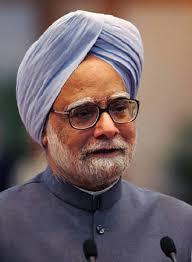
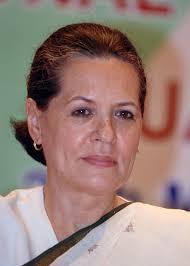 स्वदेश वापसी में प्रधानमंत्री के विशेष विमान में डा. मनमोहन सिंह ने बरखा दत्त (एनडीटीवी) से बात करते हुए जोर दिया कि अध्यादेश को हरी झण्डी 21 सितम्बर को हुई बैठक में दी गई जिसमें पार्टी अध्यक्ष सोनिया गांधी सहित वरिष्ठ कांग्रेस नेता मौजूद थे। अत: इस गैर कानूनी और अनैतिक अध्यादेश की वापसी से जो देश को विजय मिली है उसके लिए सिर्फ राष्ट्रपतिजी धन्यवाद के पात्र हैं जिन्होंने यह साबित कर दिया कि यदि यूपीए यह समझता है कि राष्ट्रपति के उच्च पद पर बैठने वाले अधिकांश अन्य कांग्रेसजनों की भांति वह भी एक ‘रबड़ स्टैम्प राष्ट्रपति‘ सिध्द होंगे, तो यह अत्यंत गंभीर भूल होगी!
स्वदेश वापसी में प्रधानमंत्री के विशेष विमान में डा. मनमोहन सिंह ने बरखा दत्त (एनडीटीवी) से बात करते हुए जोर दिया कि अध्यादेश को हरी झण्डी 21 सितम्बर को हुई बैठक में दी गई जिसमें पार्टी अध्यक्ष सोनिया गांधी सहित वरिष्ठ कांग्रेस नेता मौजूद थे। अत: इस गैर कानूनी और अनैतिक अध्यादेश की वापसी से जो देश को विजय मिली है उसके लिए सिर्फ राष्ट्रपतिजी धन्यवाद के पात्र हैं जिन्होंने यह साबित कर दिया कि यदि यूपीए यह समझता है कि राष्ट्रपति के उच्च पद पर बैठने वाले अधिकांश अन्य कांग्रेसजनों की भांति वह भी एक ‘रबड़ स्टैम्प राष्ट्रपति‘ सिध्द होंगे, तो यह अत्यंत गंभीर भूल होगी!
टेलपीस (पश्च्यलेख)
ब्लॉग में उपरोक्त वर्णित ‘दि इण्डियन एक्सप्रेस‘ के सम्पादकीय का अंतिम पेरा निम्न है:
मनमोहन सिंह ने पद छोड़ने की संभावनाओं से इंकार किया है परन्तु उनकी शेष बचे कार्यकाल में इस्तीफे का ज्यादा तुक नहीं है। राहुल गांधी ने इन विधेयकों पर अपनी स्थिति पूरी तरह साफ नहीं की है। शासन सम्बन्धी मामलों पर उनके विचार ज्ञात नहीं हैं परन्तु सरकारी फैसलों में बाधा डालने की उनकी शक्ति साबित हुई है। अब उनकी चुप्पी और मुखर तथा ज्यादा दुविधापूर्ण प्रतीत होगी। आने वाले चुनावों में यह दांव कांगेस की राजनीतिक तौर पर फायदा पहुंचाएगा या नहीं परन्तु शेष बची अवधि में सरकार का चेहरा बदरंग हो गया है।
लालकृष्ण आडवाणी
नई दिल्ली
4 अक्टूबर, 2013

L.K. Advani's Blog
- L.K. Advani's profile
- 10 followers


